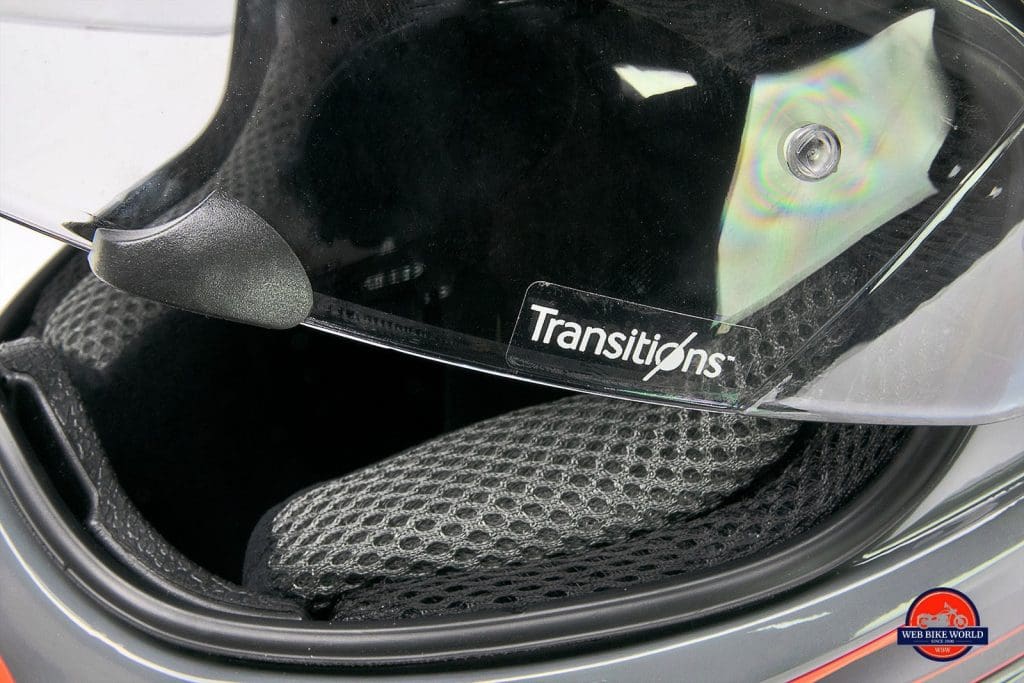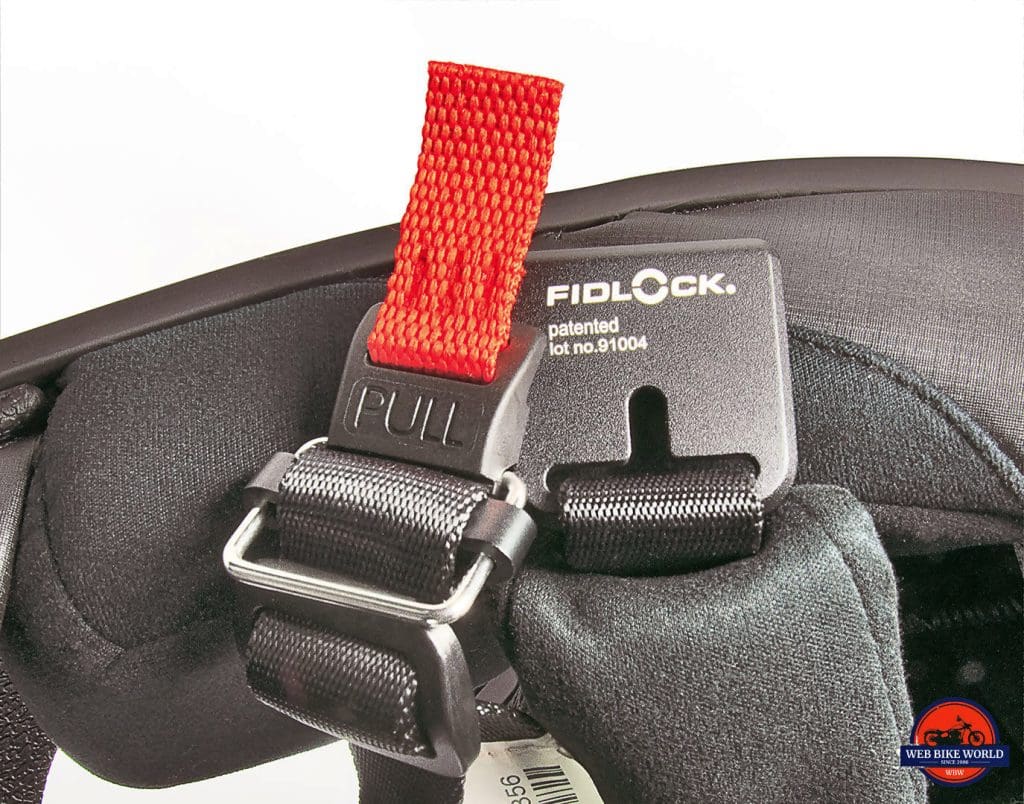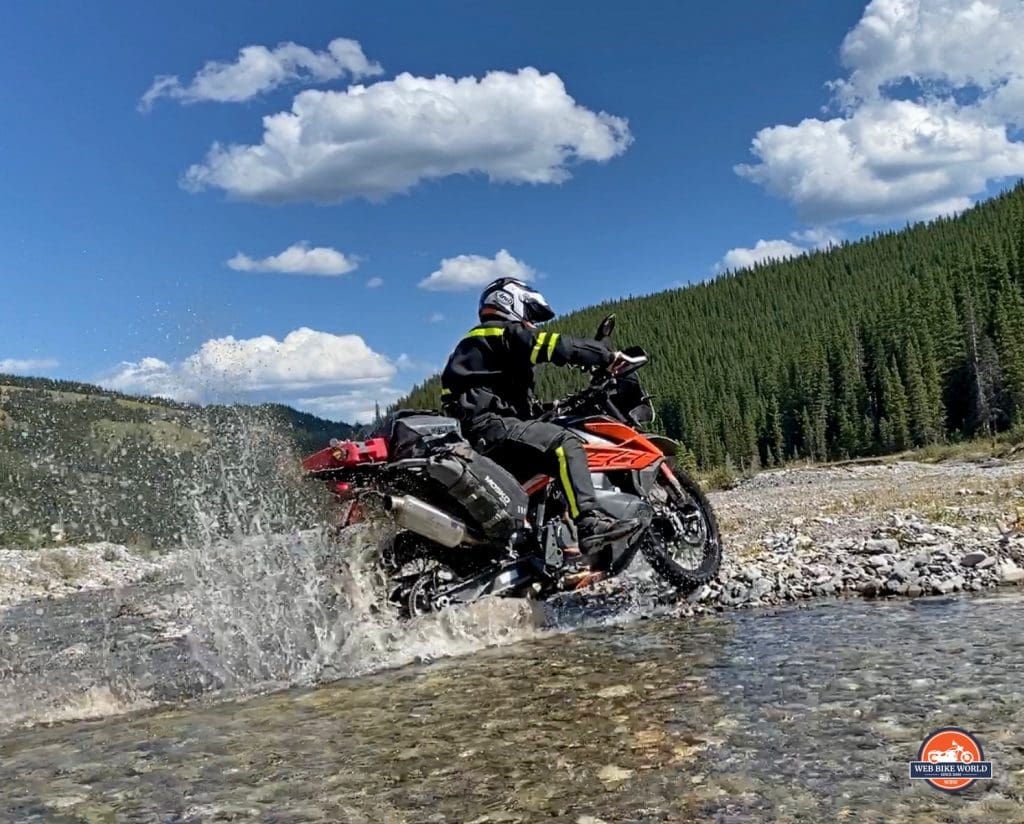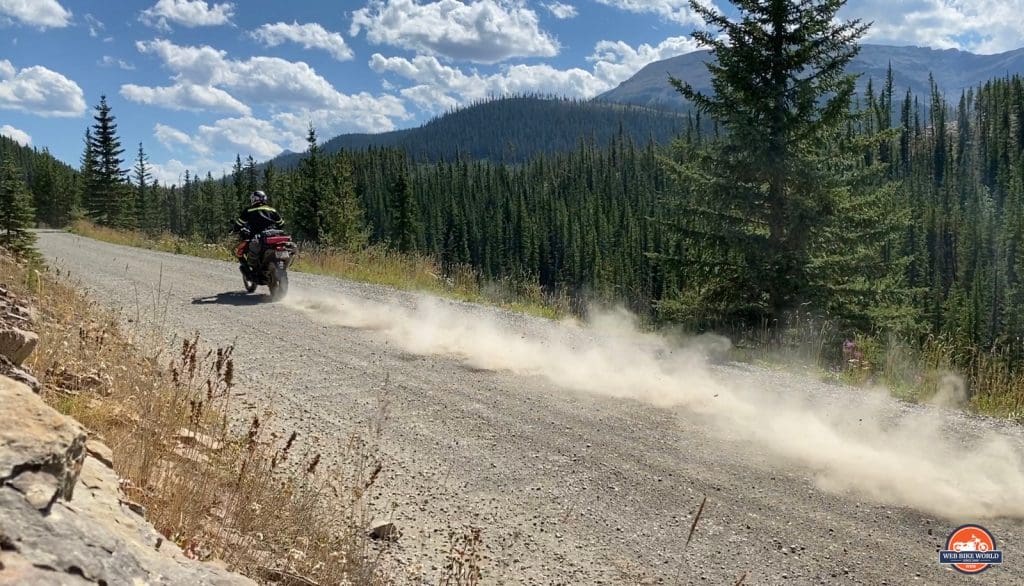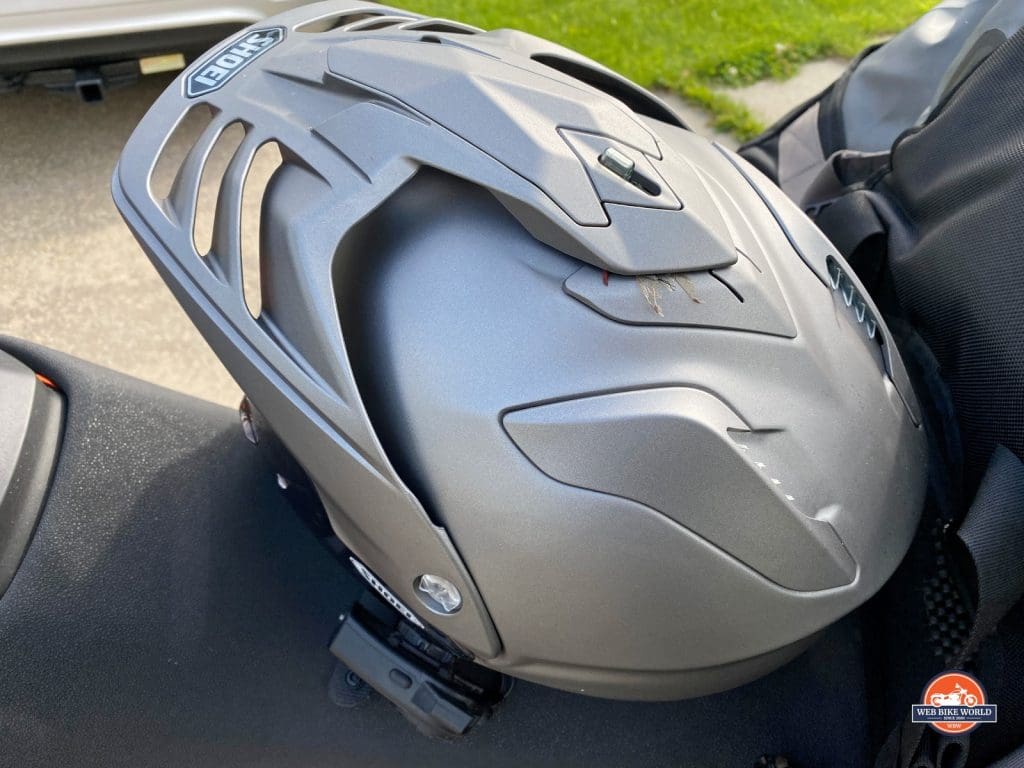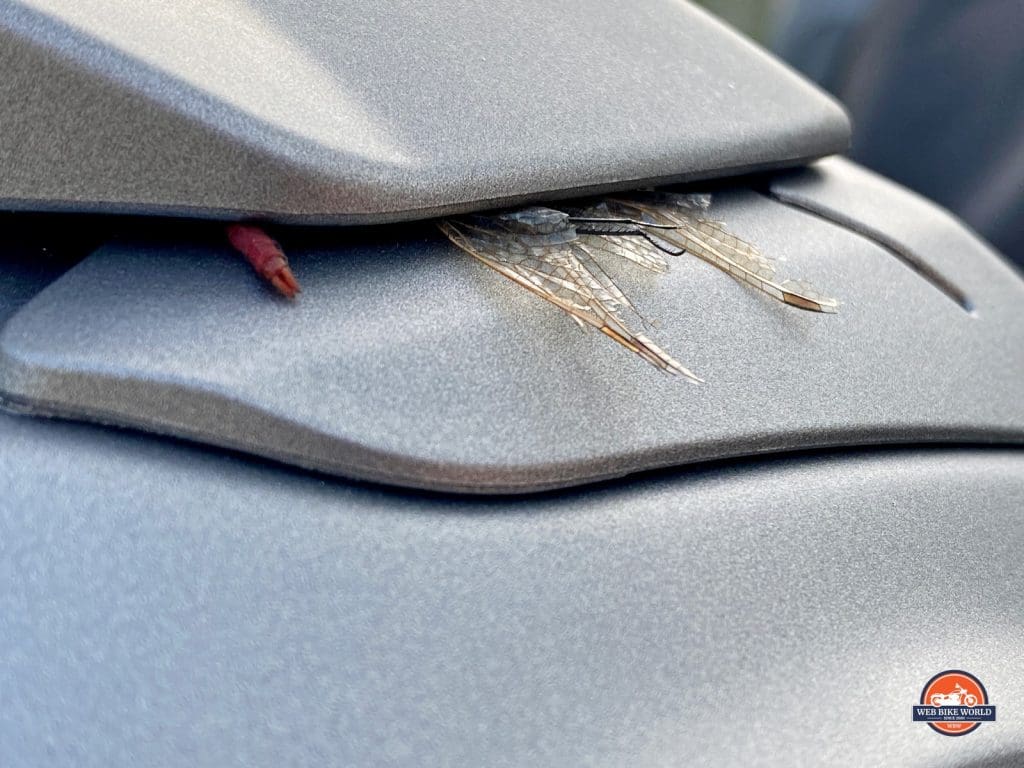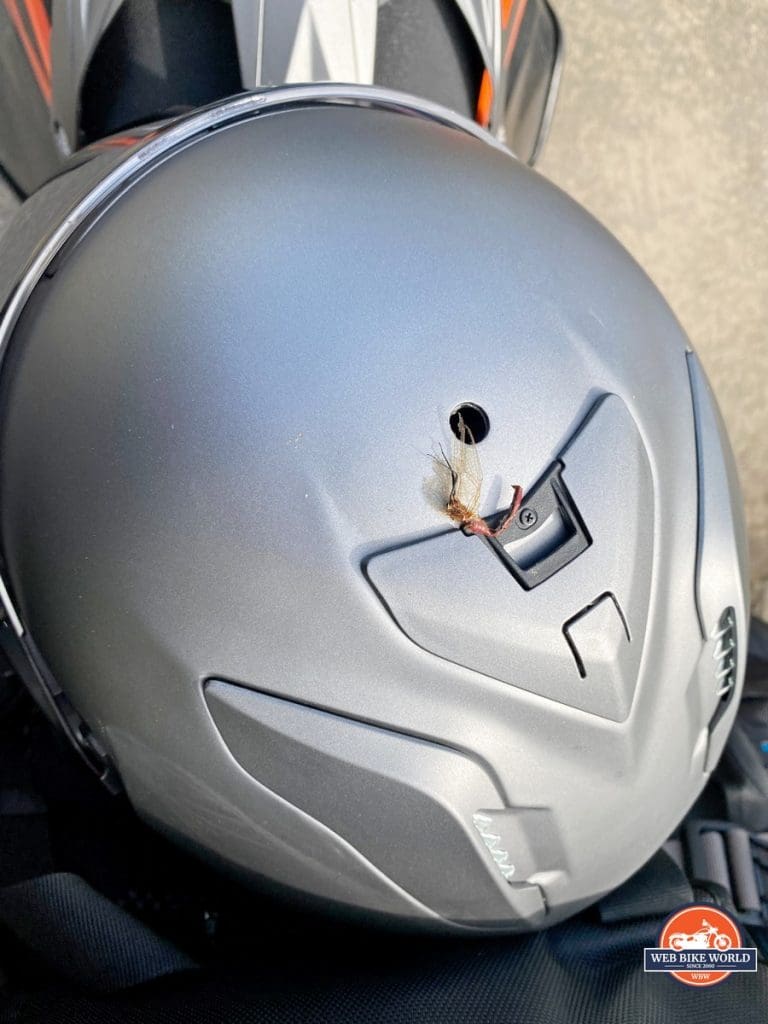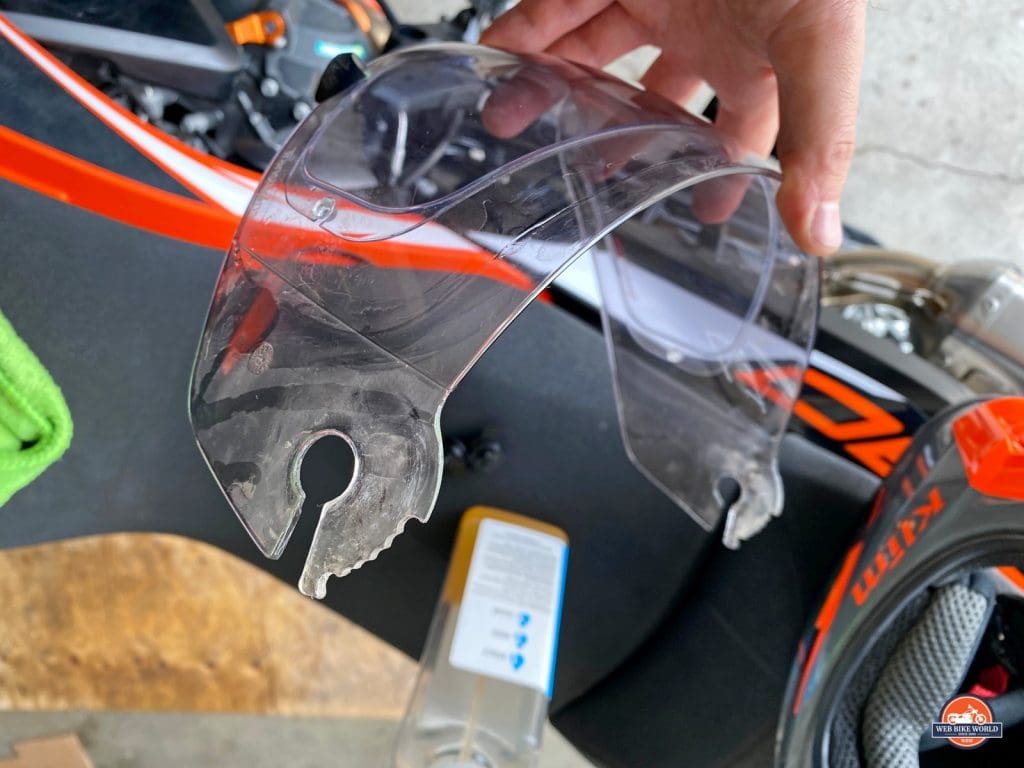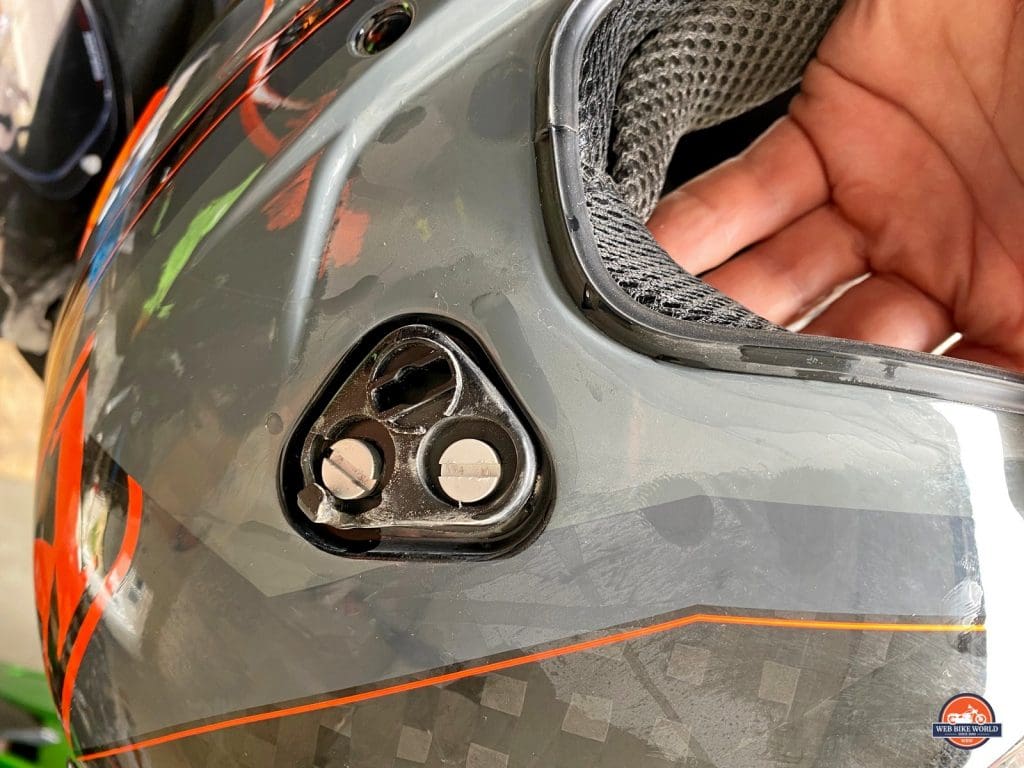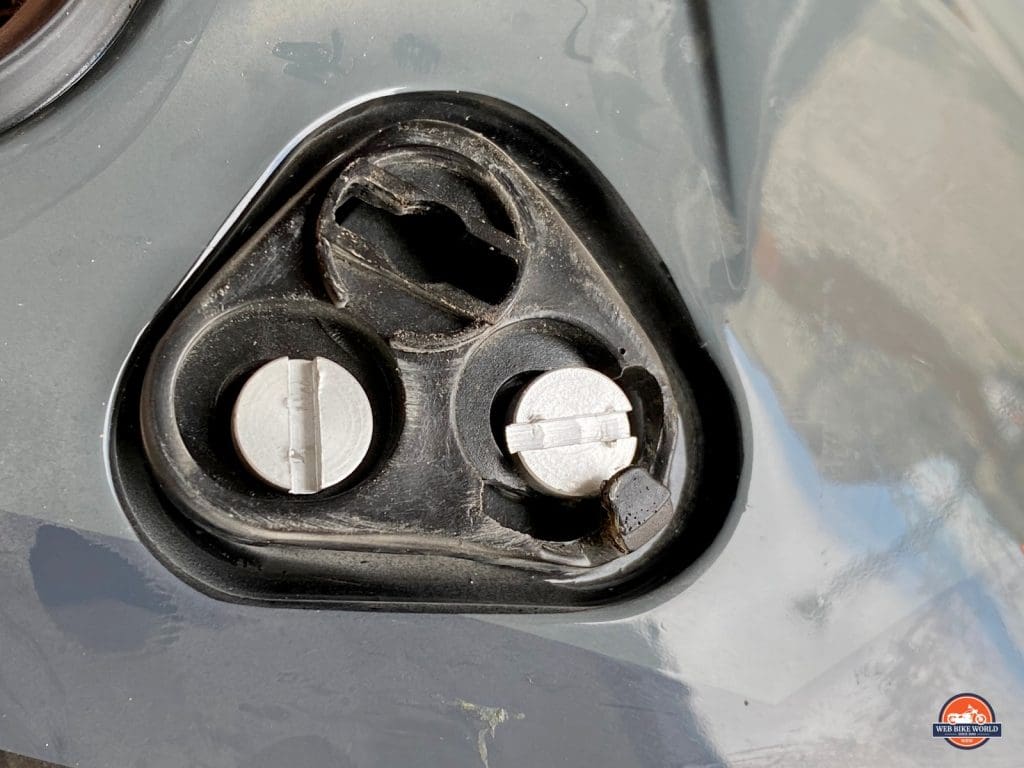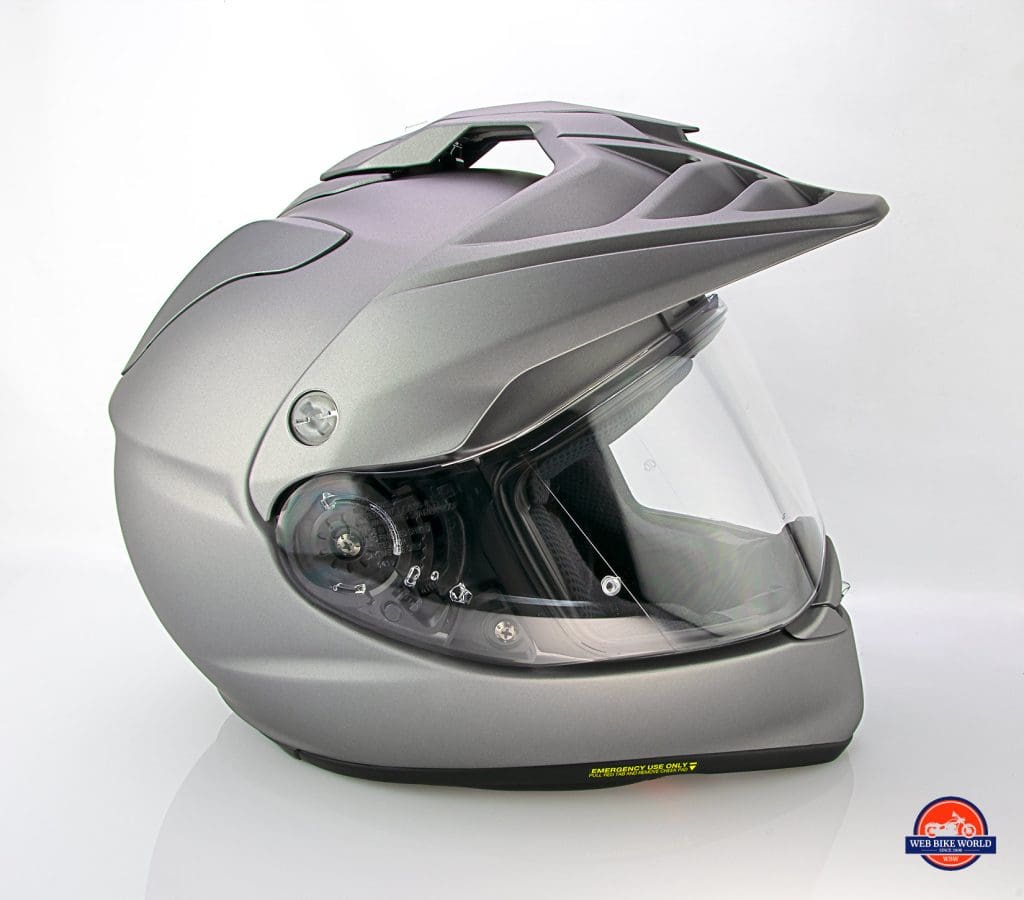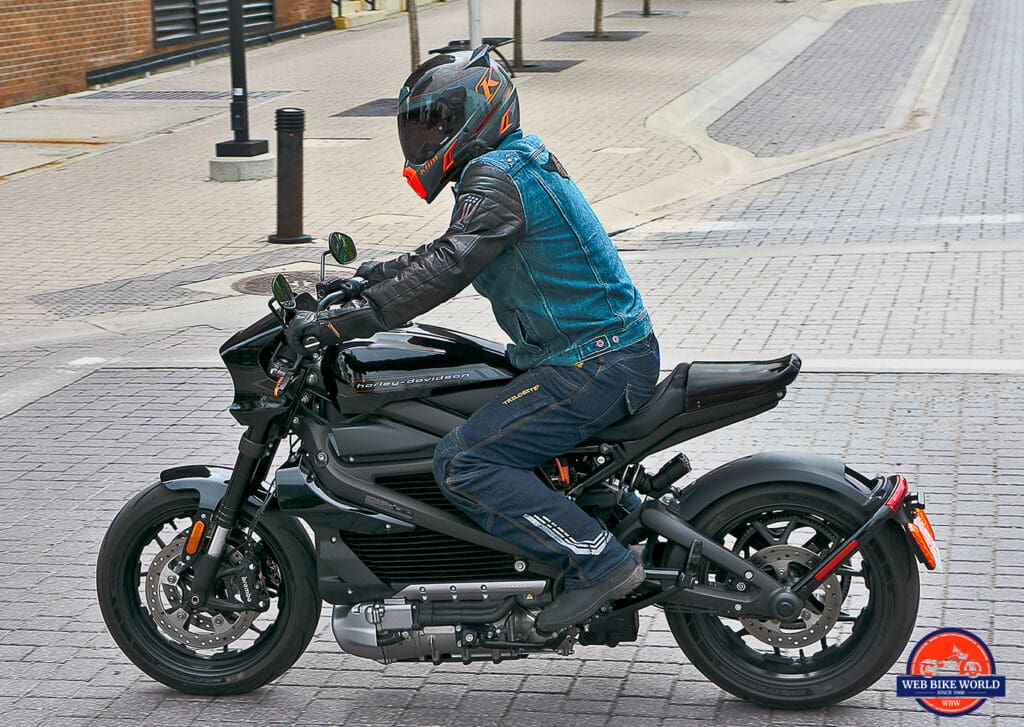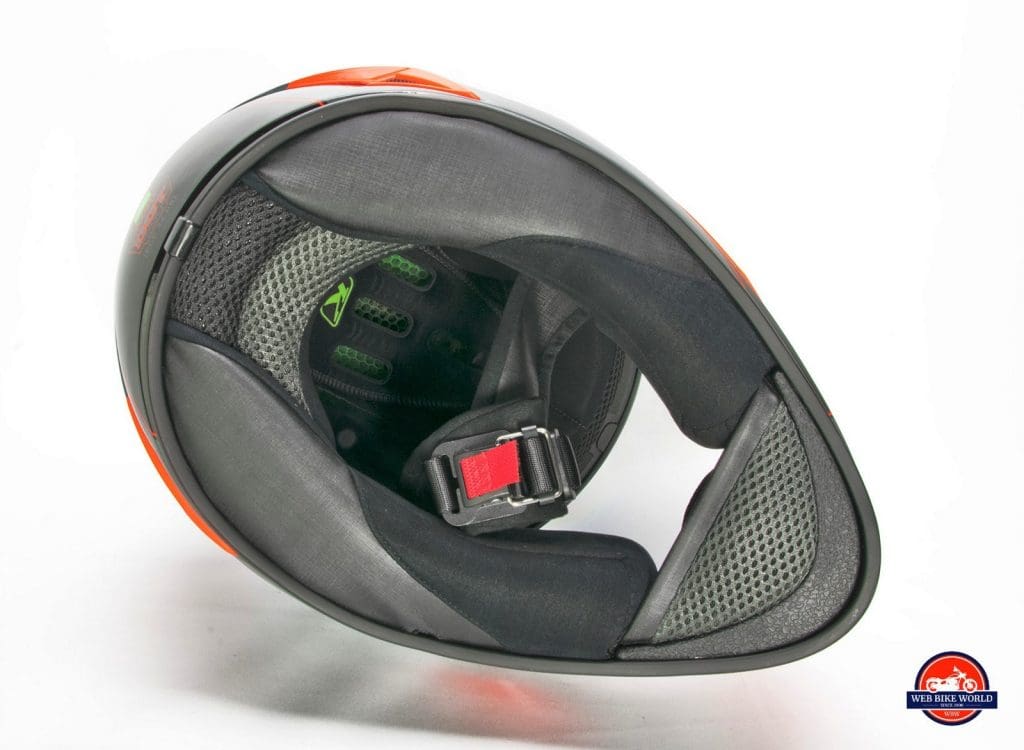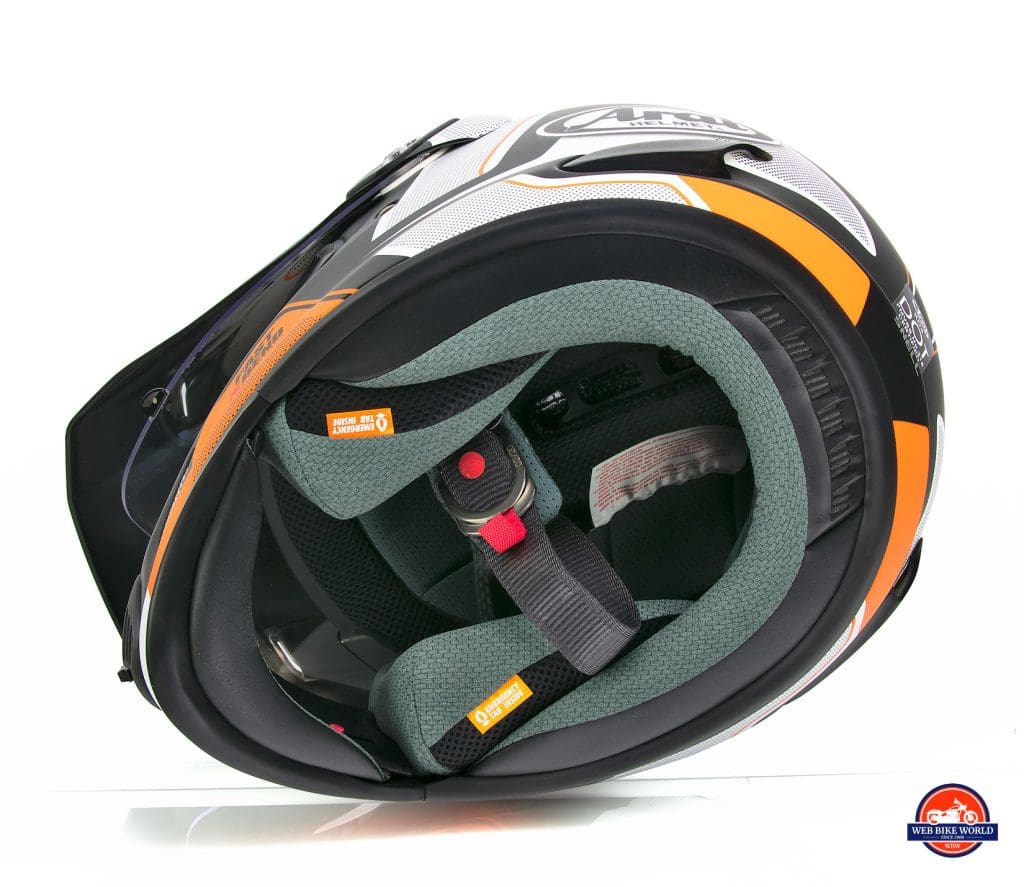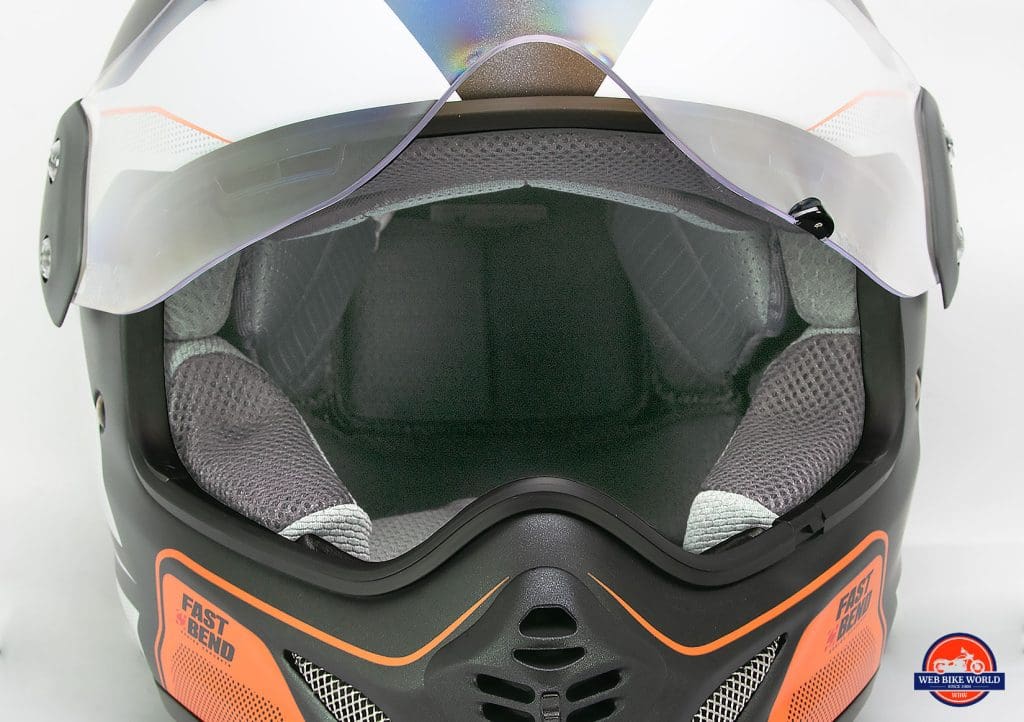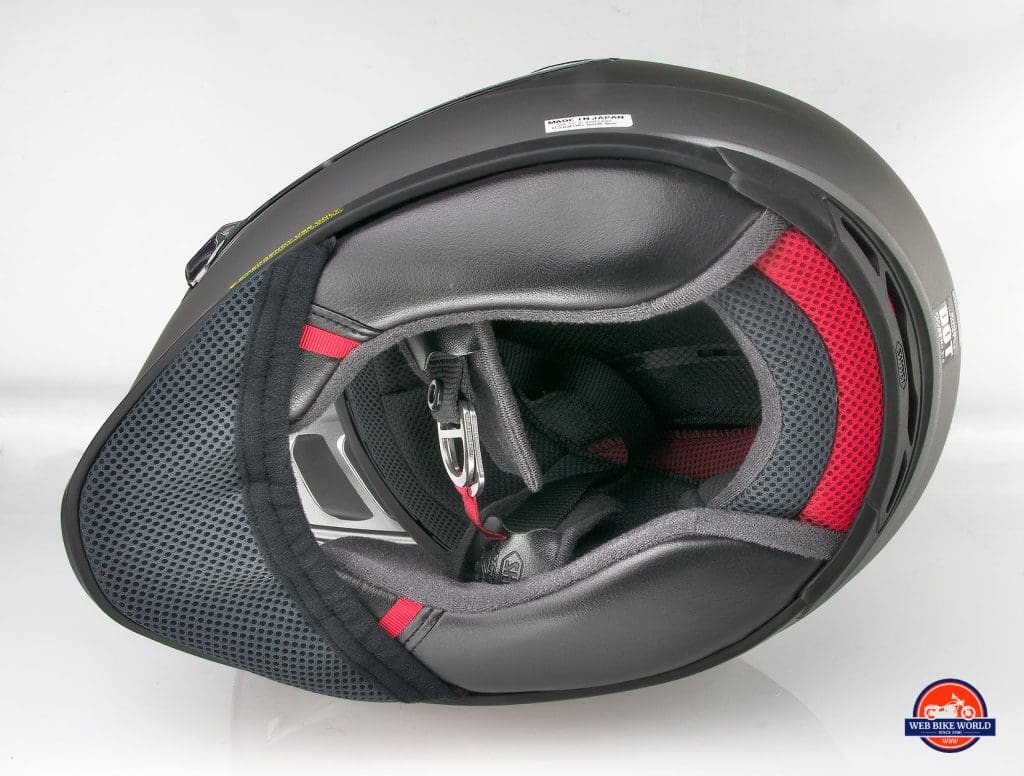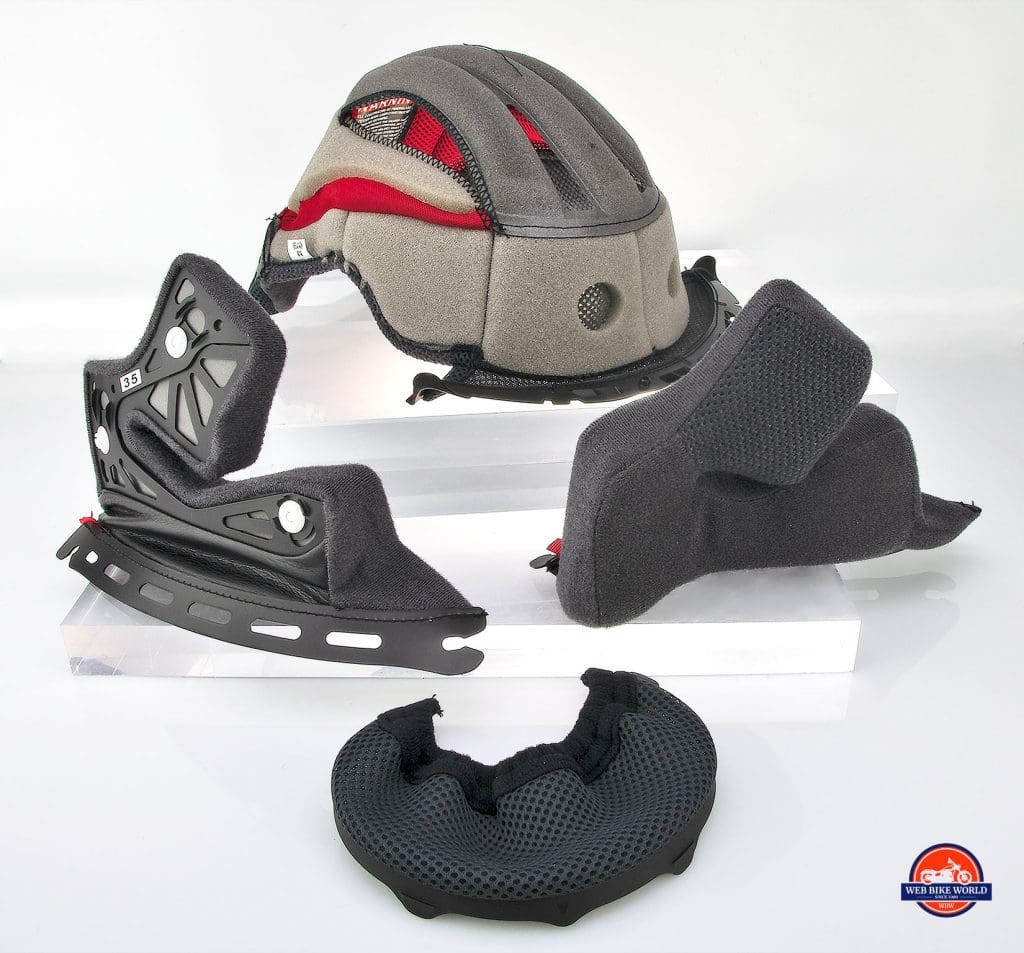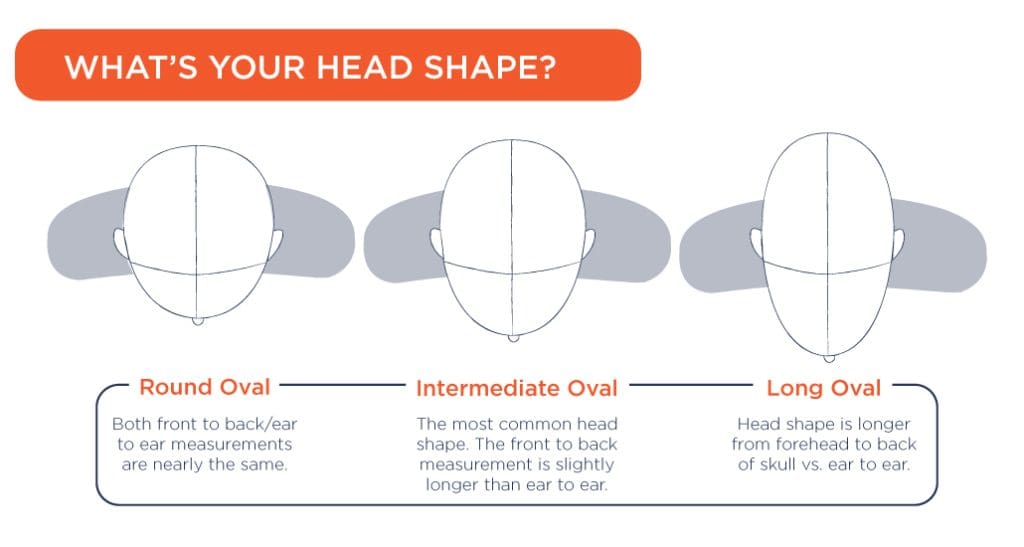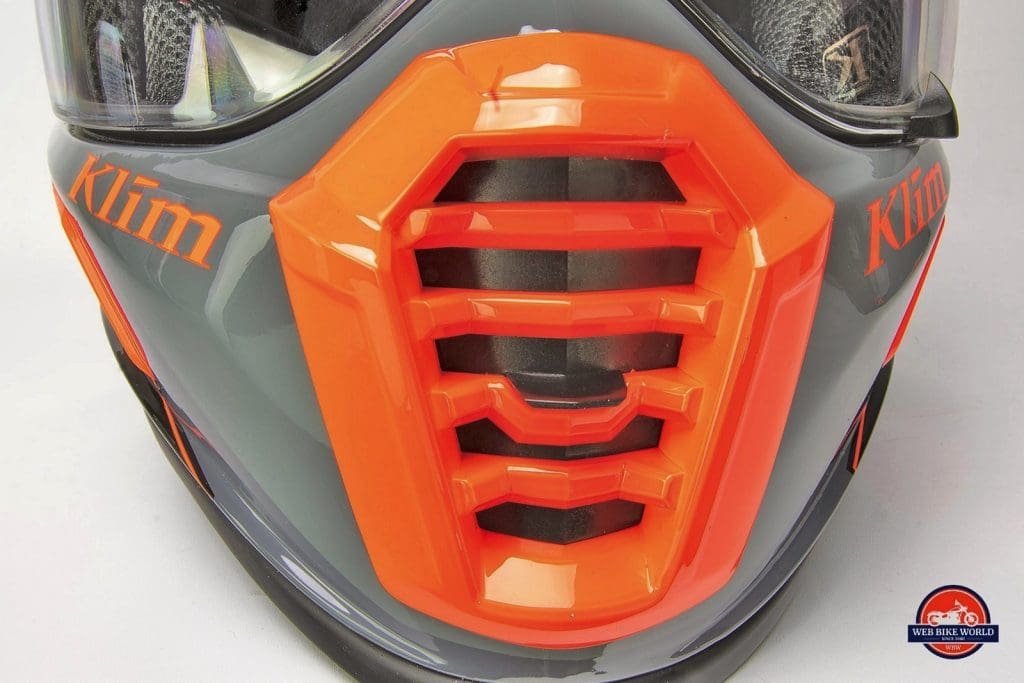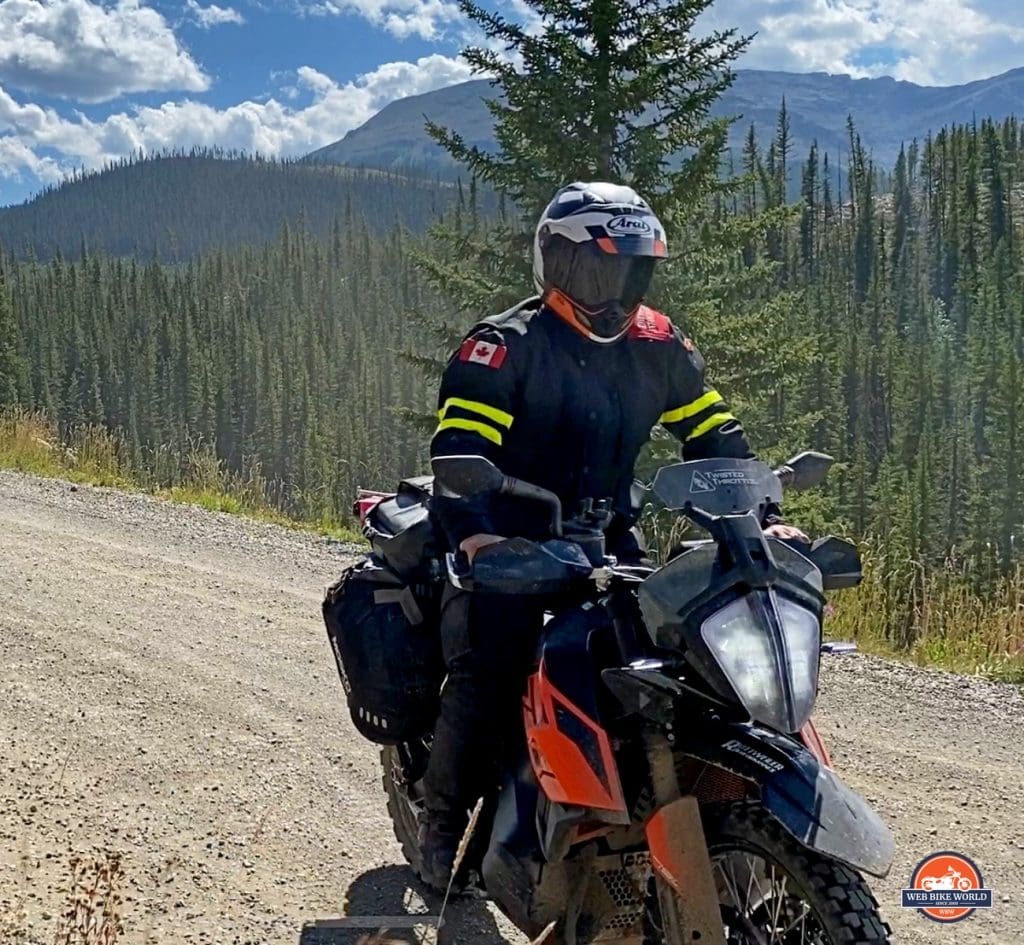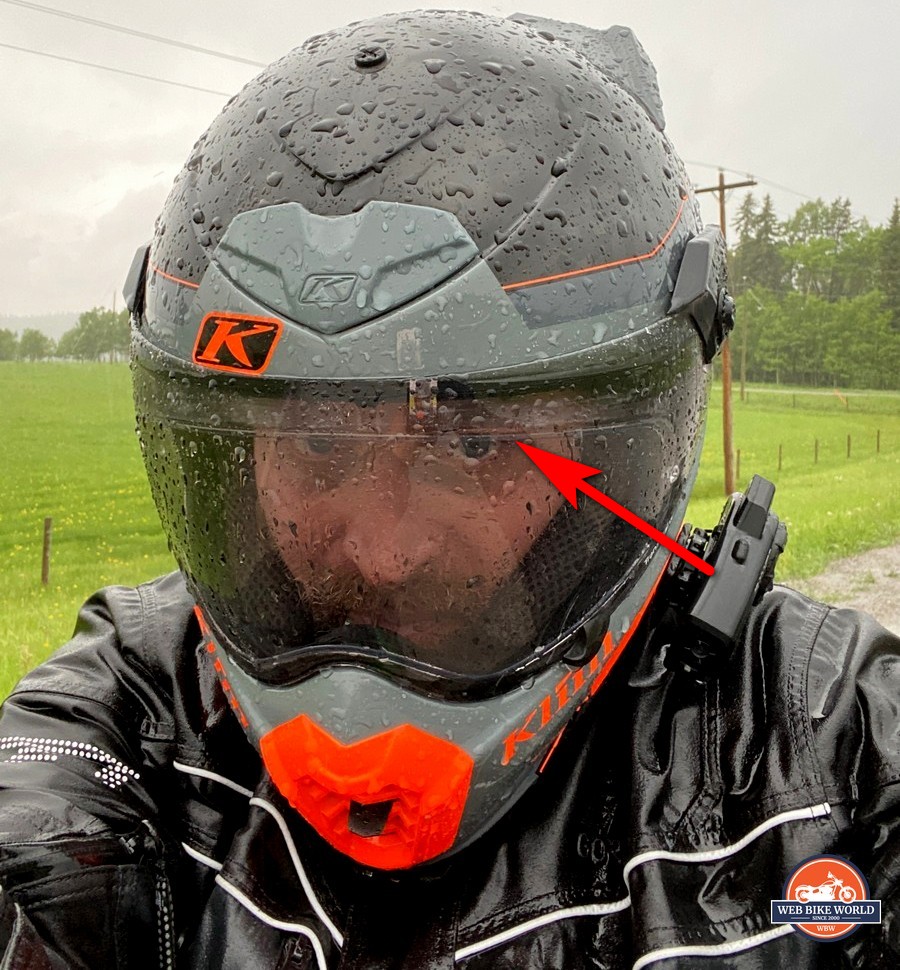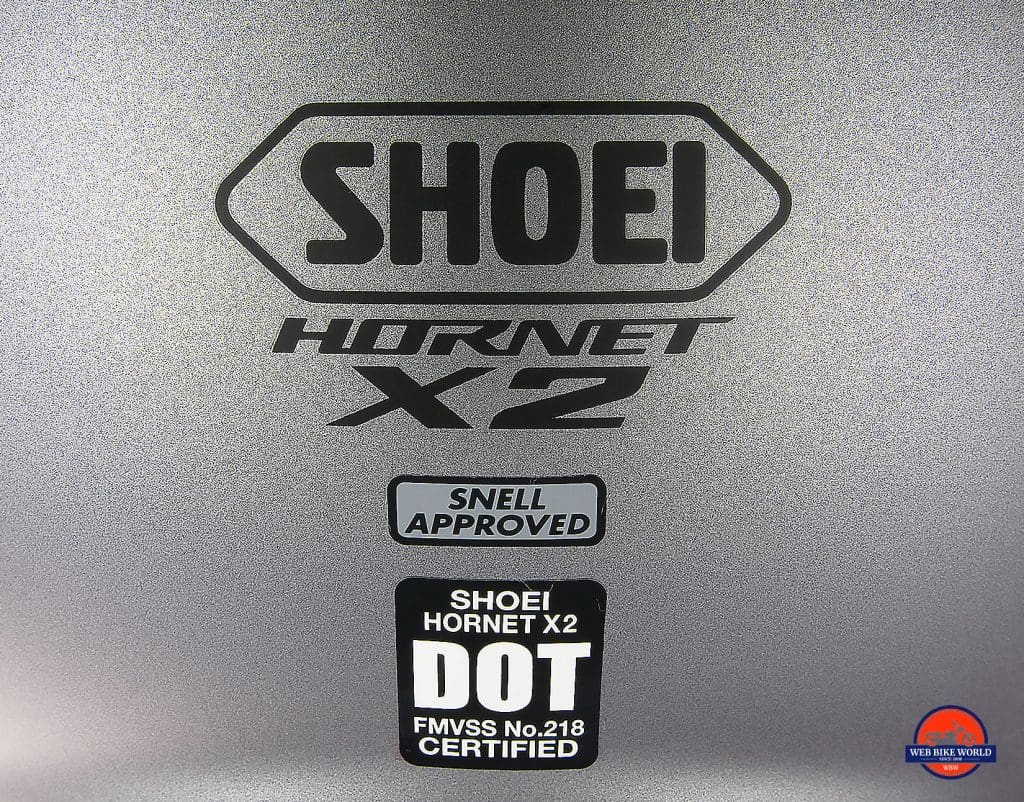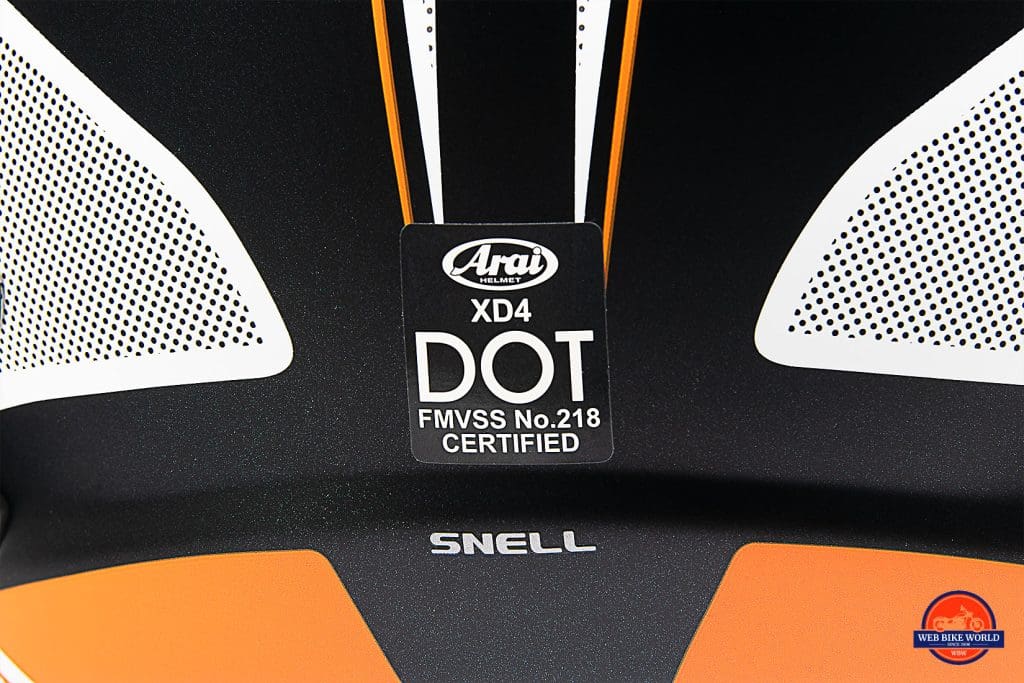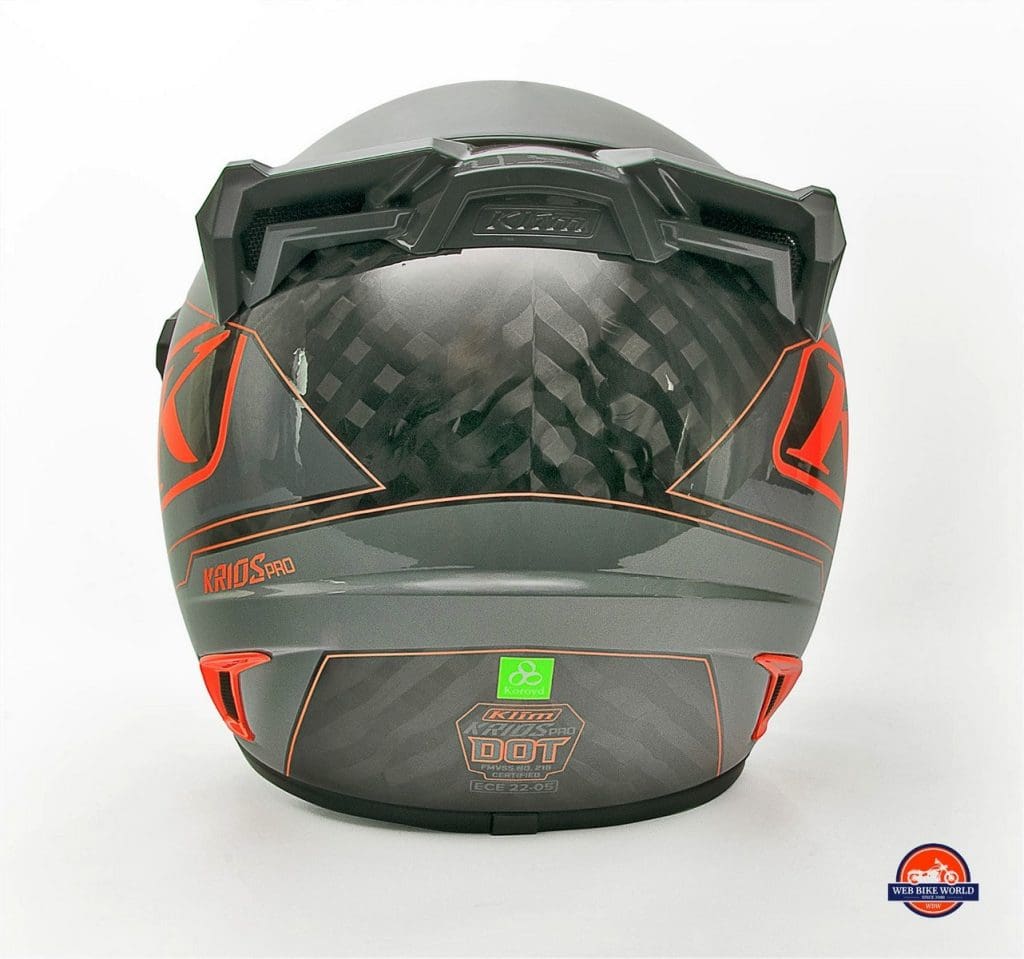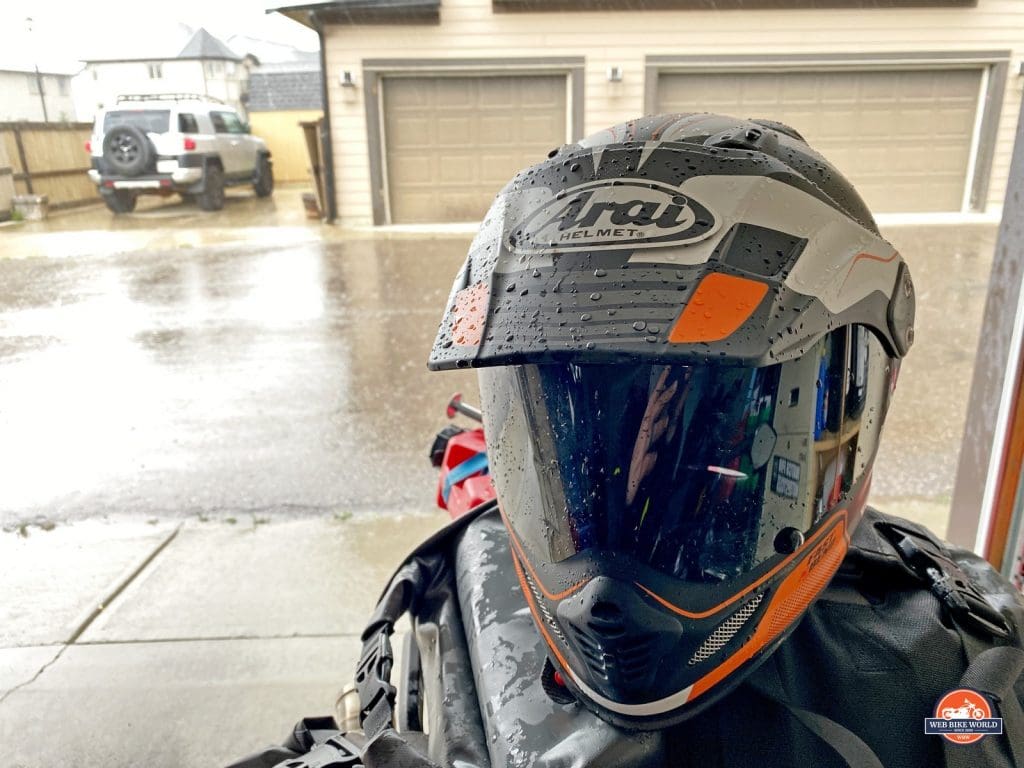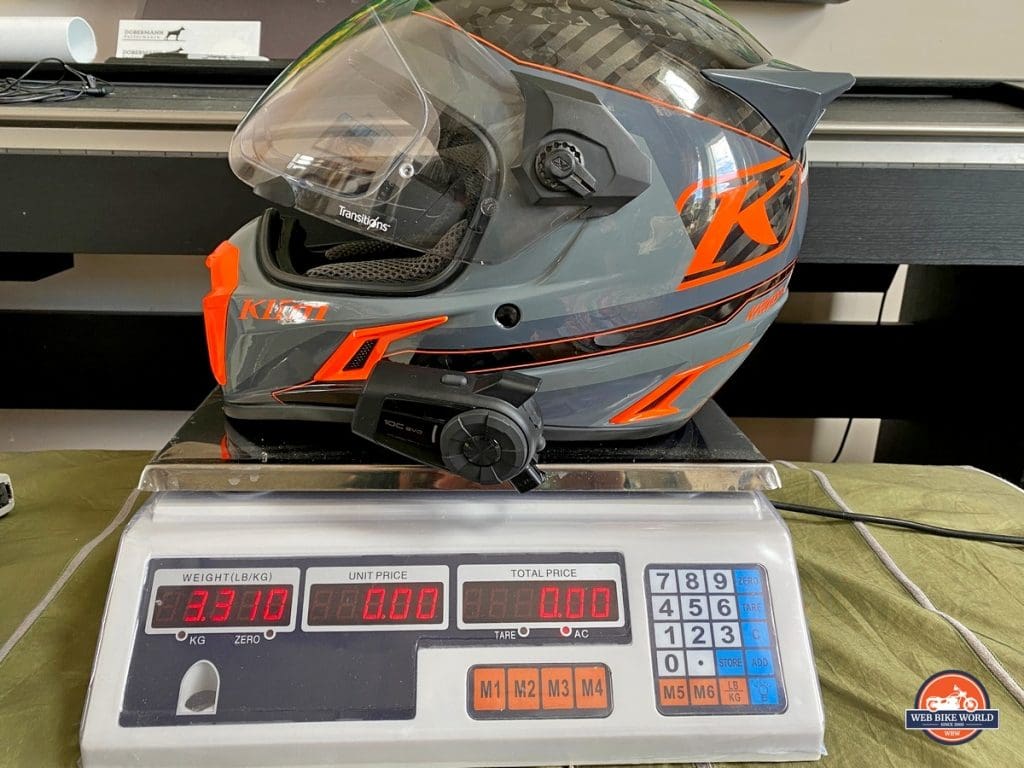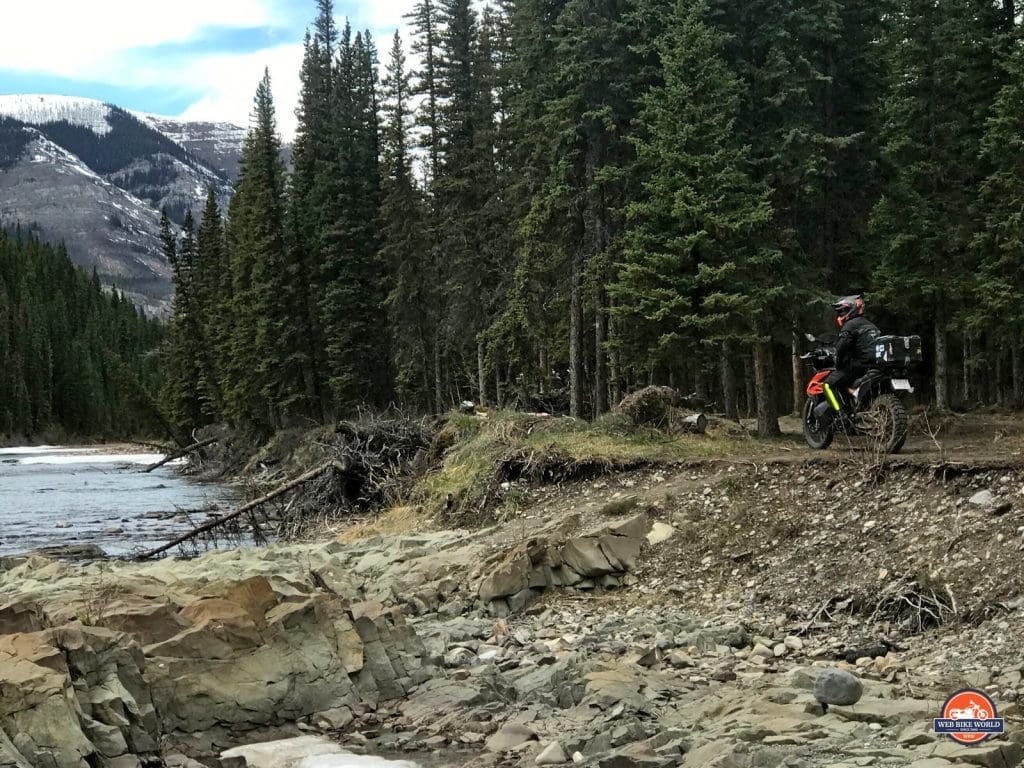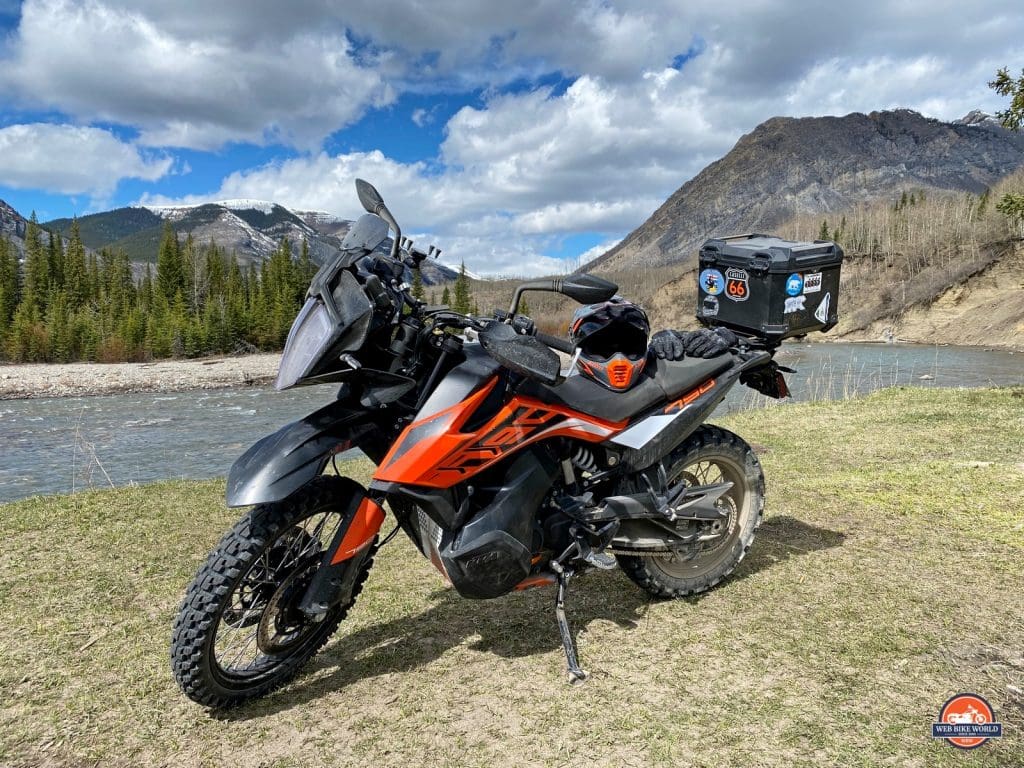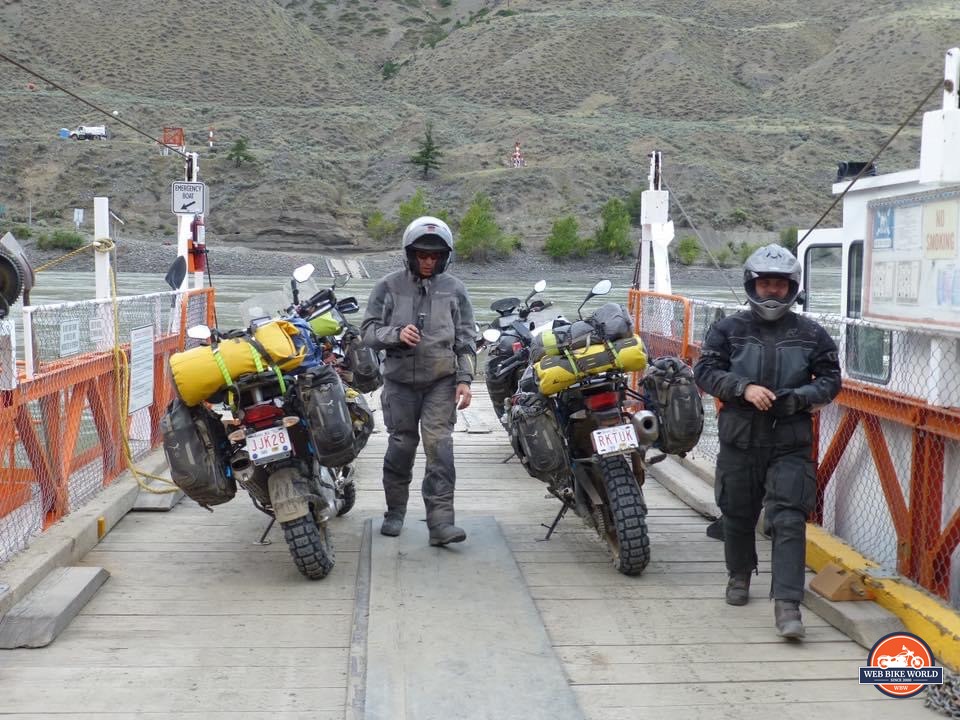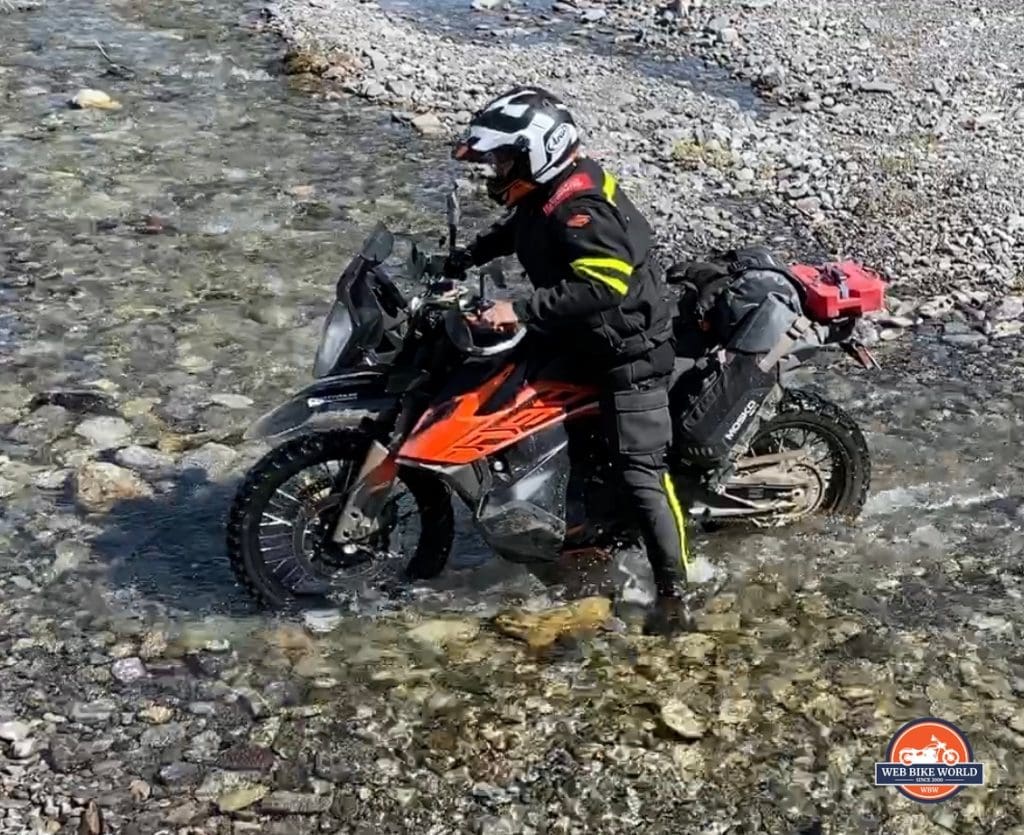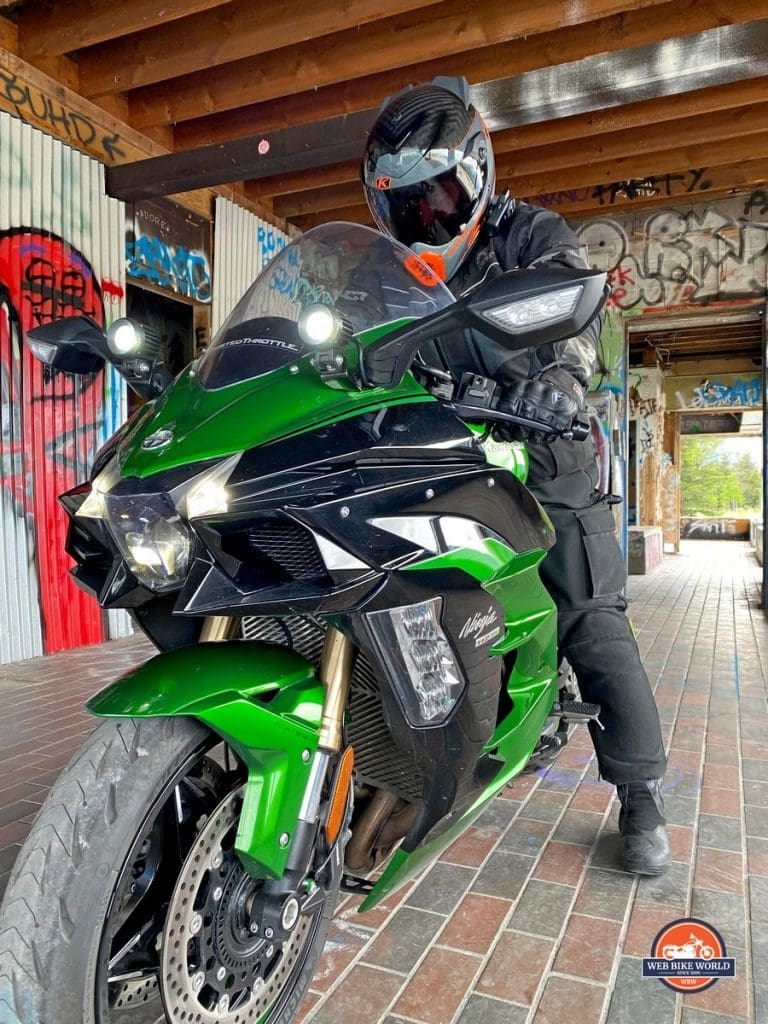Search the internet today using the words “Best (insert topic here)” and you’ll get plenty of opinionated claims popping up from a myriad of sources touting their impartiality and honesty. But who can you really trust? It’s getting harder and harder to know whether the source is secretly working for a manufacturer or just overly biased and close-minded, right?
Generally, I read several reviews for this reason and then average them out to get closest to reality but even then, my instinct tells me that some reviews are parroting others or are obsessively negative.
Lend Me Your Trust
I’ve worked very hard to remain neutral during this fun experiment I’ve run the last 3 months while testing three excellent adventure helmets. My quest was to find which one I would recommend the most to discerning consumers based upon logic and reason as much as possible. That was challenging!
I’m pleased to say that I managed to accomplish that goal while carefully considering the merits and also weak points of the Klim Krios Pro, Arai XD-4, and Shoei Hornet X2.
Certainly, I could have brought in additional contenders (and maybe should have) from manufacturers like Scorpion, AGV, and SCHUBERTH, but I wanted to limit it to the three premium-priced helmets I see most often being discussed on social media.
Thank you!
The helmets and accompanying accessories were provided enthusiastically to me by each respective manufacturer at no charge for testing. Each of them feels their helmet is the best one on the market and I would agree you can’t go wrong choosing any of them depending on what your individual riding style, needs, and wants entail. They excel in different ways.
I’ll provide specific details of how I arrived at my choices for:
- Best helmet for the price
- Best helmet off-road
- Best helmet on-road
- Most comfortable helmet
- Best ventilation or air flow
- Best visor
- Best crash protection
- Best overall quality of build
- Lightest helmet
- Quietest helmet
- Bluetooth communicator installation
- Best scoring helmet overall
These categories should help anyone pick their favorite faster and easier if they value one characteristic (ie. lightest possible) above others.
Having said that, the final category is the one I would say is most telling because it’s the helmet earning the most points. In theory that helmet will do it all the easiest. In adventure riding, adapting to ever-changing riding conditions quickly is (in my opinion) the most important factor to consider.
Scoring
In order to make this fair and clear I’ll use a point system:
- 3 points for the winner in each category.
- 2 points for the runner up.
- 1 point for third.**
**If one of the helmets stumbles significantly in any category then I won’t award the single point for third place.
Going The Distance
I’ve logged more than 2000 miles (3200 kms) while wearing each of the three helmets totaling over 6000 miles of testing time! How’s that for thorough?
I’ve ridden in temperatures ranging from 0 Celsius (32 Fahrenheit) to highs of 34 Celsius (93 Fahrenheit), on the highway while riding a sportbike and both on and off-road with my KTM 790 Adventure. I tested them on the sportbike just to gauge where the limits are when it comes to adaptability.
Rain, plenty of dust, dirt, mud, insects, rocks, tree branches, bushes, and even hailstones have ricocheted off these safety hats to test the strength of the shell finishes and moving parts (vents, visor hinges, etc).
As gross as it sounds, I’ve worn each of them for 4 days straight without having showered to test the antimicrobial liner materials. The “sniff test” is valid.
I’ve used the exact same cleaning solution and a microfiber cloth on the inside and outside of the visor lenses to test durability and scratch resistance.
Let the battle begin!
Best Helmet for the Price
Here are the prices of these helmets from the Revzilla website. You may find them for less elsewhere but I chose this site as a general source to work from. This isn’t necessarily about which helmet costs the least, but more so about the value gained for your dollars.
- Winner: Klim Krios Pro in Loco Striking Grey – $699.99
- Runner up: Shoei Hornet X2 Navigate in orange/silver/black – $715.99
- Third place: Arai XD-4 Vision in Frost Orange – $739.95
Why does the Klim Krios Pro win?
- An auto-darkening Transitions visor (valued at $150 USD!) with a Pinlock anti-fog insert ($30 USD) is included with the helmet along with extra hardware for connecting the sun peak and visor to the helmet.
- You also get a FidLock chinstrap and Koroyd material in the helmet crown as an absorption layer for energy in an impact. Koroyd is claimed to absorb crash energy significantly better than standard EPS foam.
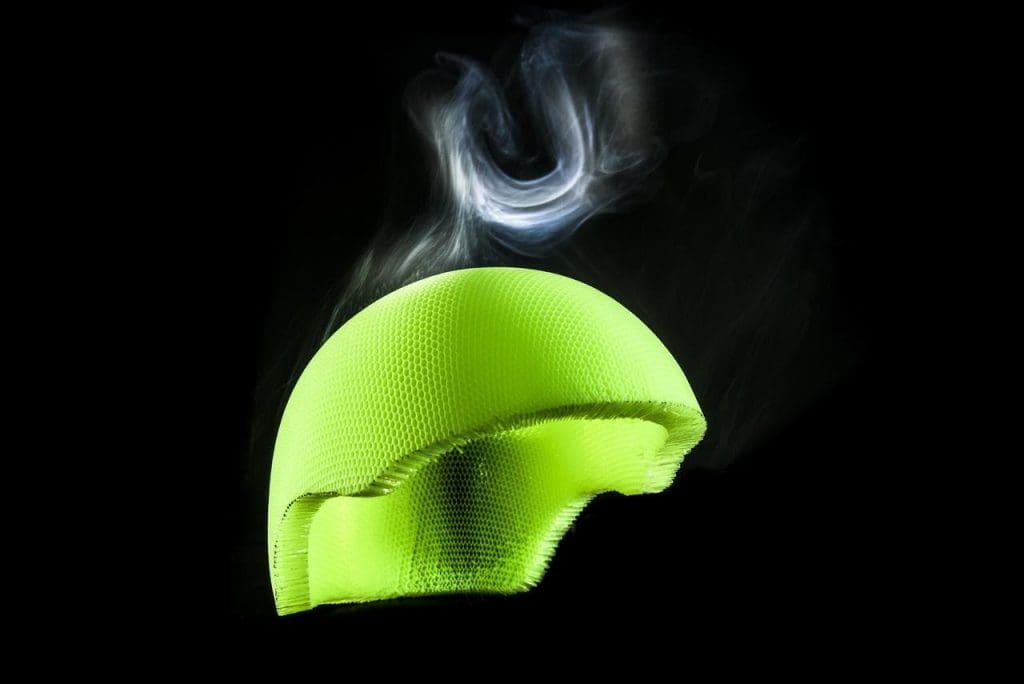
- This is as of yet unconfirmed by an independent source, though.
The Shoei
- If you prefer a D-ring chin strap closure to the Fidlock chinstrap, and don’t like a Transition visor, the Shoei comes with a clear one and a Pinlock insert. No extra mounting hardware for the sun peak comes with this helmet.
The Arai
- If you don’t like anything on your visor for anti-fog or tinting whatsoever, the Arai XD-4 comes with an untreated, clear visor and no extra visor/sun peak mounting hardware.
Admittedly, calling a $700 USD helmet a bargain sounds insane, but in my opinion, you do get the most for the least money with the Klim.
***A note on the Shoei Hornet X2: I tried to get a comparable graphic package on each helmet tested since fancy graphics inflate the price above the “solid” color schemes. Shoei didn’t have a fancy one available and so they sent me a solid silver model which costs $100 less than the fancy Navigate graphics one requested. I still used the Navigate price to compare apples to apples in this review since the other two helmets wear the premium graphics packages.
Best Helmet Off-Road
- Winner: Arai XD-4
- Runner up: Shoei Hornet X2
- Third: Klim Krios Pro (no points awarded due to poor performance)
Why did the Arai XD-4 win?
- Dust, dirt, and water resistance is the main reason I pick the Arai in this category. The sun peak and visor on the Arai is held on with two plastic screws that were completely unaffected by dust, dirt and mud buildup around the hinge area. Regardless of how much gunk was thrown in there, the visor remained consistent to operate and remove/install despite the fact it’s not quick release like the other two helmets are.
- The Arai air vents were largely unaffected by dust, dirt, bugs, etc encountered. Air flow was consistent and the vents didn’t plug up as the other two helmet vents did.
- I stayed the coolest while wearing the Arai while working hard picking up my bike or riding slowly over very technical terrain. I credit it to the combination of silky-smooth nylon material used on the interior along with better than average airflow.
The Shoei
- The Shoei top vent filled up with bug guts regularly and had to be cleaned out in order to maintain good air flow, but at least the vent switches weren’t affected by any dust, dirt or insect carcass accumulation.
The Klim
- The Klim performed well in most off-road riding thanks to how lightweight and breathable it is, but notably was the worst in dusty conditions. The vents and the hinges for the visor/sun peak clog up with dust the easiest of the three competitors. The chinbar vent wouldn’t even close anymore after only 2 hours of gravel road riding and had to be flushed with lots of water just to get it to move again. Ditto for the visor quick release inserts. They wouldn’t budge until thoroughly rinsed.
Sun Peaks
- The Arai sun peak does a great job protecting the visor when in the raised position. It’s got the least amount of openings in it of the three and as such almost completely covers the visor, keeping it from getting scratched by branches when riding through gnarly, single track terrain.
The Shoei
- The Shoei sun peak allowed several scratches to the partially exposed top part of the visor (in the fully raised position) when riding in similar heavily wooded areas, but didn’t scratch at all when cleaned with a microfiber cloth.
The Klim
- The Klim visor took a small amount of damage just from being wiped by my gloves while riding in the rain, and the large gaps in the sun peak don’t protect it when fully raised like the Arai peak does either.
- All three helmets work equally well when using goggles instead of the visors and the massive field of view available to the wearer looking out from the eyeport is terrific for off-road navigation.
- The paint on the exterior of the Shoei shows damage much more easily than the finish on the other two helmets do. I now have three small dents in the Hornet X2 silver paint that show up conspicuously thanks to the bright white primer that lies underneath.
I had to get really finicky in order to pick a winner in this category, but the Klim was the easy third place finisher because of how the dust negatively affected it.
**The Krios Pro vents jamming open (and the sun peak fasteners seizing) due to dust build up is what I would call an unacceptable failure compared to the other two helmets, so I think it’s fair not to award even the single point I normally would for finishing in third place.**
Best Helmet On-Road
- Winner: Shoei Hornet X2
- Runner up: Arai XD-4
- Third: Klim Krios Pro
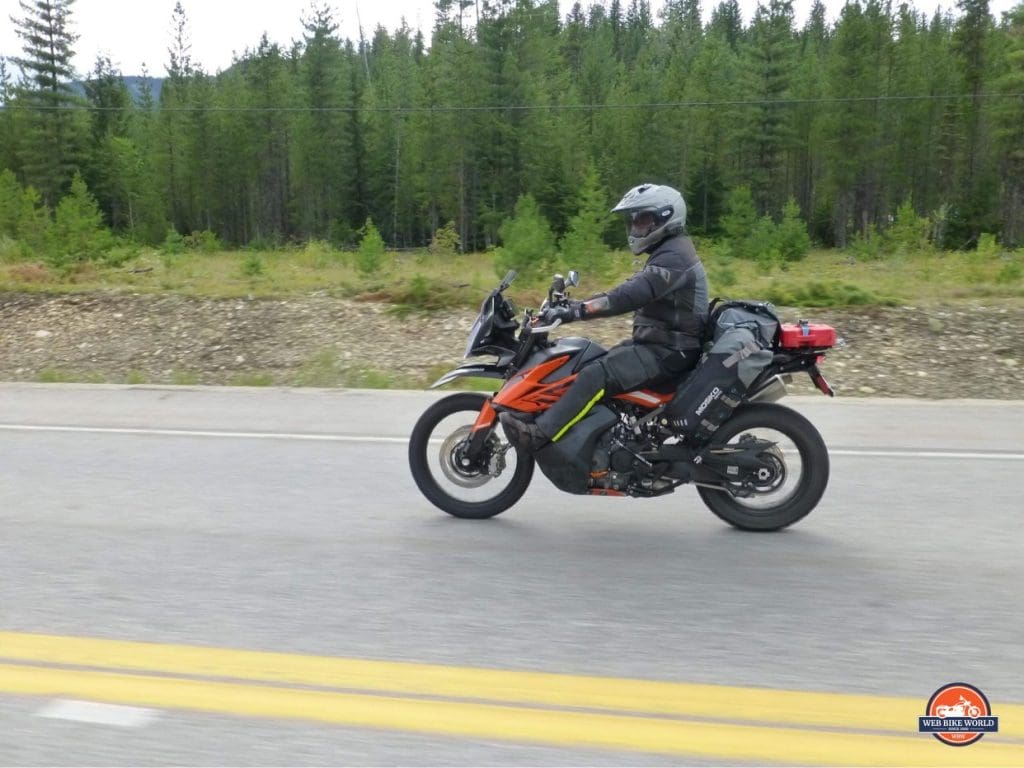
Why Did the Shoei Win?
This one is so close to call because all three helmets perform reasonably well at highway speeds, in busy traffic, and in the rain. I’m tempted to call it a draw between the Arai and Shoei but there are a couple of factors that give the nod to the Hornet X2.
- The sun peak on the Shoei is locked in place and the chinbar isn’t elongated like the other helmets making it the least affected by crosswinds and headwinds. Yep, that’s it. That’s why it wins by the smallest of margins over the other two helmets.
The Arai
- The Arai sun peak comes in second for crosswind neck cranking and the fact it is adjustable to two positions is both good and bad. It’s impressive that it will stay in the lower position even with the wind working on it, but if you tilt your head up too high the wind will grab it and yank the sun peak up violently. The effect on the wearer’s neck is more pronounced because the peak can move independently from the helmet unlike on the Shoei or Klim.
- The Arai sun peak also wind whistles annoyingly in the lower position but not the upper one.
The Klim
- The Krios Pro sun peak is super disappointing to me because of how easily crosswinds grab it and the way headwinds work on it. It creates a painful pressure point on my forehead.
- I had to remove the sun peak from the Krios Pro in order to ride on the highway without discomfort. Interestingly, once the peak is removed the Krios Pro is fantastic at high speeds!
- If I ride with the peaks removed from all the helmets I like the Krios Pro the most because it’s slightly quieter and much lighter. I feel bad giving it third place in this category, but it’s only fair to judge it with the sun peak installed.
Most Comfortable Category
- Winner: Klim Krios Pro
- Runner up: Arai XD-4
- Third: Shoei Hornet X2
Why did the Klim win?
I admit this area is dependent on multiple factors that can vary from person to person, so let me hash this out.
- The Klim Krios Pro has velvet-like microsuede lining every inch of the interior padding which is heavenly to have against your face any day. The interior cradles my head perfectly and evenly all around as it should. Best of all the Krios Pro only weighs 3.1 lbs (1406 g). That’s nearly a full lb lighter than the two other helmets, resulting in zero neck fatigue even after long days in the saddle. The carbon fiber shell and a Koroyd-infused crash liner get the credit for this win.
- The Klim shell tapers inward ever so slightly at the neckroll, so it’s tight getting my fat, round oval shaped head in or out, but not to the point it causes me as much grief as the Shoei does.
The Arai
- The Arai is easier to get on and off my head and just as comfortable for me to wear as the Klim is. In truth, I personally prefer the fit of the Arai more than the Klim, but I believe the majority of people might prefer the overall package the Klim offers when it comes to comfort. It’s so close though because the XD-4 liner can be fine tuned for thickness and shape more readily than the Klim padding and the center of gravity is low down making the extra bulk barely noticeable.
- The Arai only narrowly misses winning this section because it’s so much heavier than the Klim.
The Shoei
- The Shoei is VERY narrow in shape, especially around the neck roll opening. In fact, I had to swap out the interior padding to a much thinner M5 crown liner and M31 cheek pads just to avoid enduring serious pain on the sides of my head! Since installing the new thinner liners it’s been comfortable if not still a tad snug compared to the other two, but that’s better than being too loose.
- I find I have to hold this helmet at a sharp angle when donning it, otherwise, it folds over my right ear in an irritating way.
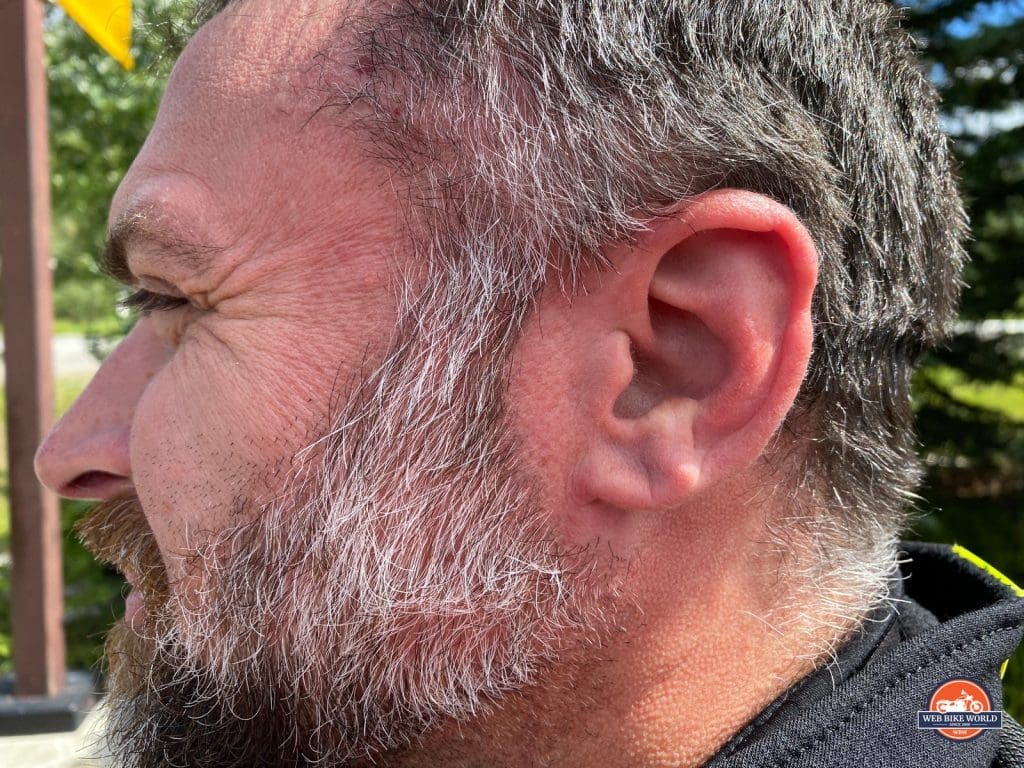
You can see the painful marks left on the side of my round-shaped head from the narrow Shoei HornetX2 in the photo above.
**Note: if you have a head shape that is on the narrow or long oval end of the spectrum then the Shoei is the helmet to buy for comfort without question.
Best Ventilation & Airflow
- Winner: Klim Krios Pro
- Runner up: Arai XD-4
- Third: Shoei Hornet X2
Why did the Klim win?
- It comes down to the fact that in temperatures below 15 Celsius (59 Fahrenheit) I must close the vents on the Klim in order to avoid getting too cold. Even with the vents closed the Krios Pro flows more air than many helmets do with their vents open.
- The chinbar vent on the Klim is massive, but it’s not just the volume of air entering that sets the Klim apart. It’s the coverage or distribution of air across my scalp I really notice. I can feel it around my temples on both sides and on the back of my head too.
- Despite the massive volume of air entering the helmet there’s a perfect area to mount a Sena or Cardo microphone right in the top-center area of the chinbar where no wind noise gets picked up. The same spot works in the Shoei, but the Arai struggles with this. I’ve tried everything and still can’t find a quiet pocket in the chinbar area to mount my microphone. A minor complaint, but in this clash of helmet Titans even a small flaw will tip the scales.
The Arai
- The Arai XD-4 is right there with the Klim in the airflow department and actually flows air more turbulently in the chinbar area. It also has more flexibility in how the air flowing through it can be customized than the Klim does thanks to a larger number of vents to work with.
- It blows my mind just how good the ventilation is in this Snell M2020 certified helmet. I only score it second because I don’t feel like I need to close all the vents when the temperature drops to 15 Celsius or 59 Fahrenheit. It’s SO CLOSE though, that I’m sure some people will justifiably disagree with me on this one.
The Shoei
- The Hornet X2 takes third place when it comes to airflow. Like the Arai, it flows air surprisingly well for a Snell M2020 certified helmet. Poor airflow is a popular gripe against Snell rated helmets, but that isn’t the case with this Shoei.
- It does a respectable job keeping me cool but lacks the same number of vents found in the Arai and I’ve never found the need to close the vents on it even in cooler weather.
Best Helmet Visor
- Winner: Shoei Hornet X2
- Runner up: Klim Krios Pro
- Third: Arai XD-4
This category winner may create some controversy I’m afraid! This win is definitely asterisked because it’s not the visor the Shoei comes with that wins. I was sent the Transitions CNS-2 visor by Shoei to better compete with the Klim Transitions visor.
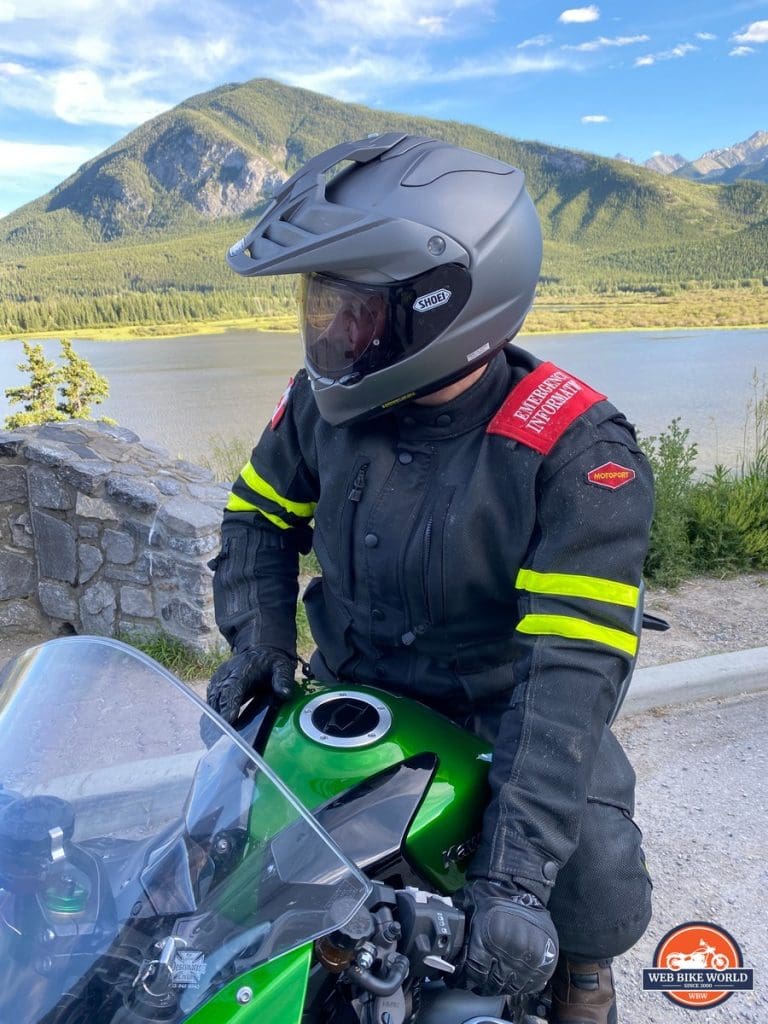
Why did the Shoei win?
- The Hornet X2 comes from the factory with a clear CNS-2 visor and Pinlock anti-fog insert. That visor is excellent when it comes to clarity, durability, and strength, but I wouldn’t pick it over the Transitions visor that also comes with a Pinlock with the Klim Krios Pro from the factory.
- However, Shoei’s specially designed CNS-2 Transitions visor for the Hornet X2 (when combined with the Pinlock insert) that I was also sent for this review is easily the best all-around visor I’ve ever used on a helmet. But, it costs a whopping $209.95 extra to buy over and above the $500 to $700+ Hornet X2 helmet (price depending on the chosen graphic package).
- Am I playing fairly by giving the win to the helmet with the best visor available instead of giving the win to the helmet that comes with the best visor from the factory? Either way, the Transitions visor for the Hornet X2 is tops with me.
The Arai
- The Arai comes with a clear visor from the factory with no anti-fog coating or Pinlock insert. It really needs some sort of anti-fog strategy added (as do all three helmets). If you don’t install the Pinlock in the Klim or Shoei visors they fog up horribly.
- Arai sent me a tinted visor with a special anti-fog coating on the inside for this comparison in order to compete with the auto-tinting Transition lenses on the other two. This tinted Arai visor costs an extra $74.55 to buy but is a brilliant lens and worth the added cost. It’s actually clearer than either of the other two visors since it doesn’t have a second layer of plastic to look through (no Pinlock).
- It resisted fogging up just as well as the Pinlock visors did during my testing and my cleaning solution didn’t harm the coating despite repeated cleaning sessions.
- NOTE: Pinlocks and anti-fog coating notwithstanding, all three visors did fog up a little bit at the bottom in front of my nose when used in colder temperatures, but not in my field of view where it matters.
The Klim
- The Klim Krios Pro Transitions visor is more than sufficiently clear to look through and I appreciate the convenience of the auto-tinting, but the Pinlock insert isn’t custom designed for the uncharacteristically large visor on it the way the Shoei one is. Klim just chose a standard Pinlock insert that stops about ¾’ below the top of the visor creating an annoying optical border between the Pinlock covered area and the non-covered area of the visor.
- That’s why the Shoei wins and the Klim comes second.
- Something important to bear in mind is that these Transitions visors wear out after 3 or 4 years from what I’m told and need replacing because after that time they don’t darken enough anymore.
- Conversely, the permanently tinted Arai visor will remain consistently shaded. This knowledge may sway your choice away from the Klim and definitely from paying more for the Shoei Transition visor if price is a major concern.
- I still prefer the Transitions visors because I don’t need to wear sunglasses in the helmet or burden myself with a second clear visor to swap out when riding at night or in low light conditions.
Best Crash Protection
- Co-Winners: Shoei HornetX2 and Arai XD-4
- Runner up: Klim Krios Pro
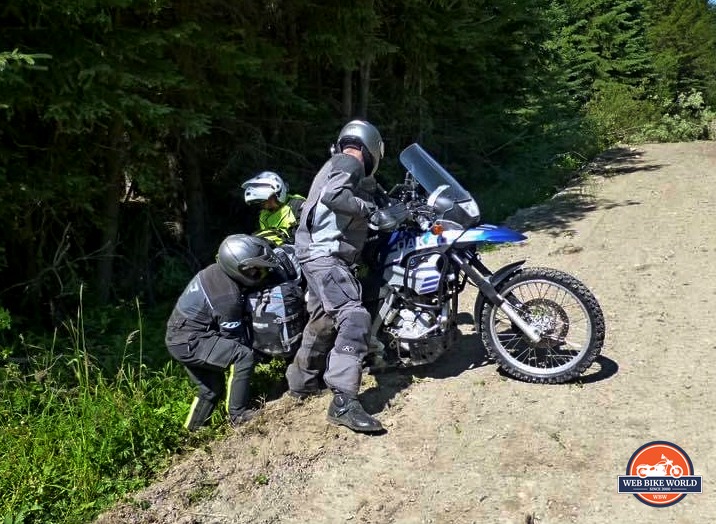
Why did the Arai and Shoei beat the Klim?
- Snell M2020 is a proven standard of safety certification shown to demand the highest level of performance from a helmet. Some would argue it’s overkill and unnecessarily stringent, but in an adventure helmet, it seems appropriate. Conversely, the ECE 22-05 standard while also excellent doesn’t demand as much from a helmet comparatively.
- I have no way of knowing whether the XD-4 performs better than the Hornet X2 in crash testing, but both are Snell M2020 approved. I was hoping SHARP had tested both helmets and I would have used their scoring to break the tie, but alas neither are on their list. So it’s a draw, unfortunately.
Have a look at the video below to see some of what I witnessed at the Arai factory when it comes to crash testing their RX-7V helmet.
- The Koroyd safety liner found in the Klim is claimed to absorb a lot more crash energy than the EPS foam liners found in both the Arai and Shoei, but as I mentioned before this hasn’t been confirmed by an independent testing facility at the time of this writing. If there comes a time it is then I would have to consider giving the victory to the Krios Pro in this category.
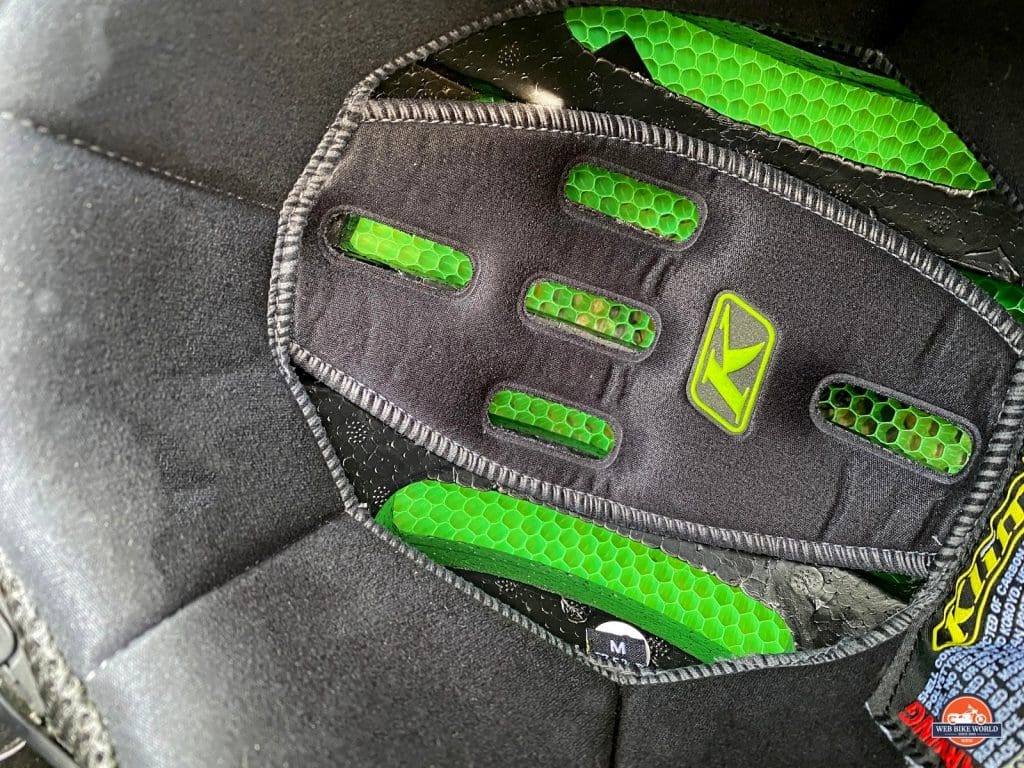
Having said all that, there’s more to providing protection in a crash than just energy absorption. The shape of the shell, protrusions, and ridges along with the way it’s built also play a significant role in determining structural integrity. The shape can contribute to deflecting incoming energy away from the absorbent liner materials before absorption even becomes a factor.
The wavy, disorganized carbon fiber weave patterns found on the Klim shell don’t fill me with as much confidence as the hand-built fiberglass and aramid formulas used by Shoei and Arai on theirs.
My contacts at Klim insist their carbon fiber sheets are hand-laid in the molds with exact precision and care. They say the waves on the outside layer of carbon fiber are caused by excess resin being pushed out of the pre-impregnated sheets they use during the curing process. They say it’s only a visual flaw and doesn’t affect structural integrity. I’m not a carbon fiber expert, but an hour-long research session I conducted online seemed to back up this claim, so I’ll take their word for it.
I’ve personally toured the Arai factory in Japan and seen their complete dedication to chasing the highest possible level of quality control in their shell creation process.
I suspect Shoei runs their QC inspections in a similar way as Arai, but can’t confirm they take it to the extreme level I witnessed at Arai. I was scheduled to tour the Shoei factory in April 2020, but COVID19 travel restrictions forced me to cancel it indefinitely. I’m going to get there as soon as possible to confirm my hunch.
Overall Quality of Build
- Winner: Arai XD-4
- Runner up: Shoei Hornet X2
- Third: Klim Krios Pro
Why did the Arai win?
- In a nutshell, it’s because it came out of the testing showing the fewest scars, and feels the closest to how it did when it came fresh out of the box. Even after thousands of miles ridden through rough terrain, there are zero dents, dings, scratches, or broken pieces.
- I also feel Arai took more risks with the design than the other two manufacturers did and yet still came through with flying colors. There are triple the amount of plastic vent covers/louvers stuck to the outer shell which could have fallen off or failed, yet didn’t.
- The Arai interior is customizable for size and shapes more readily than the other two helmets and everything comes apart just as easily as it goes together after cleaning. All features are there for a specific purpose and they just plain work.
The Shoei
- The Shoei is right there neck and neck with the Arai in almost every way, but the matte, silver paint on the outer shell didn’t shake off a number of knocks it took out on the road and looks like it’s been through a war comparatively speaking. Nothing failed on it either, but Shoei played it safe with the exterior design which is actually wise.
- I enjoy the “space soldier” look of the Hornet X2 a lot. The clear fins embedded in the exhaust vents on the back of the helmet remind me of the engine exhaust pipes found on many World War 2 fighter plane engines that stuck out of the fuselage.
- I wonder whether the gloss finish on the Navigate model of Hornet X2 would have been less prone to damage than this matte one I tested? Regardless, the Arai XD-4 I tested also has a matte finish on it so it’s kind of a moot point. The XD-4 barely squeaks out a win here over the Shoei.
The Klim
- The Klim Krios Pro is a very nice helmet and well made, but it’s not hand made like the other two helmets are. Looking closely at it now after many, many thousands of miles ridden I’m noticing the orange plastic guarding around the chin bar vent is beginning to lift and separate ever so slightly from the carbon fiber shell and there are a few scratches on the visor exterior just from wiping it with my glove while riding in the rain.
- The plastic pieces on it don’t feel as high end as the ones on the Arai or Shoei.
- Actuating the vents and other moving parts on the Klim doesn’t feel as solid and sure, with the exception of the visor which is super smooth and quiet.
- As already mentioned the weave of the carbon fiber is a bit sloppy too, and the fact the Pinlock insert doesn’t truly fill the eyeport opening further illustrates the difference between how it was built by factory workers in China versus how the other two were built by artisans in Japan.
The antimicrobial liners in each helmet stood up well to the “funk” test. Even after I sweated into them profusely, none of them have a nasty smell left behind.
Lightest Helmet
- Winner: Klim Krios Pro
- Runner up: Arai XD-4
- Third: Shoei Hornet X2
The Sena 10C EVO weighs 0.2lbs so subtract that from the weight shown in this photo.
I weighed these helmets on my home scale instead of relying on specs from the manufacturer or distributors. As is often the case I got different numbers than those advertised on Revzilla.
- As already mentioned the Klim wins handily at 3lbs 1 oz and it feels lighter than that. Absolutely outstanding comfort is the main benefit of this feather-light frame.
- The Arai comes next at 3.8lbs
- The Shoei is the beefiest at 4lbs
The Shoei and Arai both feel lighter to wear than they are because of the appreciable effort put into keeping the center of gravity low in the shell. Neither helmet makes me feel tired wearing it, but again the Klim doesn’t even feel like a helmet, it’s so lightweight.
Quietest Helmet
- Winner: Shoei Hornet X2
- Runner up: Klim Krios Pro
- Third: Arai XD-4 (no points awarded due to whistling noise)
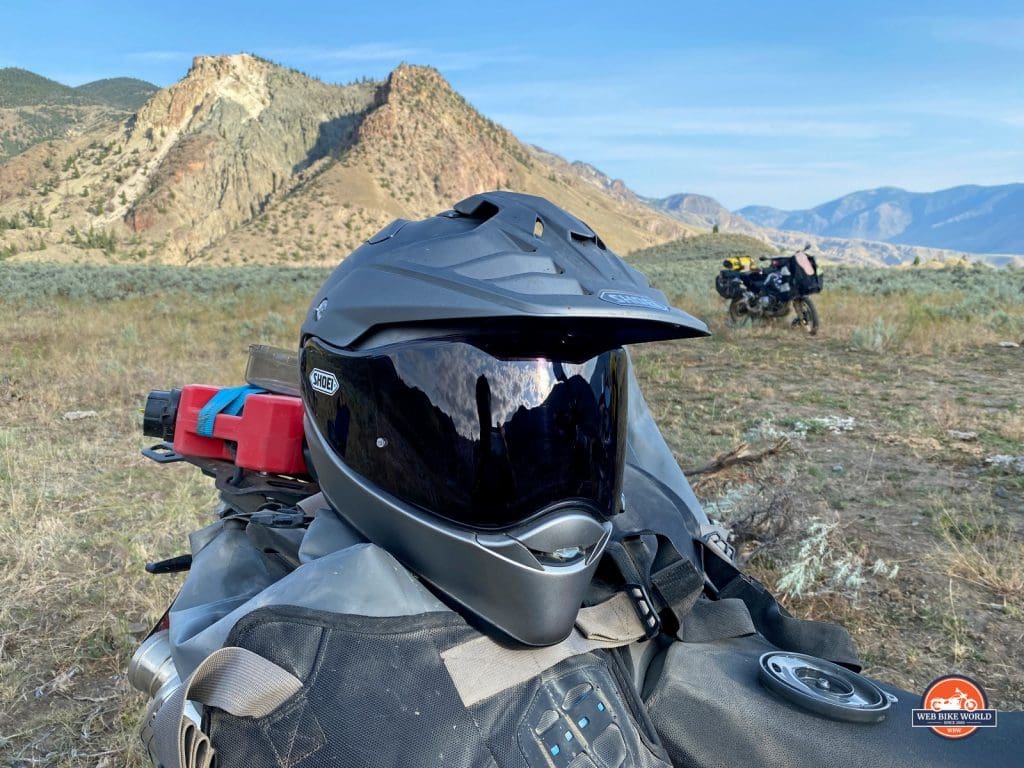


Why did the Shoei win?
I wish I had a truly unbiased and scientific method to measure how noisy or quiet these helmets are so that I could present more than just an opinion. I haven’t worked out how to do that yet. There are just too many variables to account for if I use a microphone in the helmet while out riding and I don’t have the resources to build a wind tunnel.
None of these helmets are what I would classify quiet because of the turbulence and roar caused by the sun peaks, but they are generally quieter than I would have guessed.
- I picked the Shoei as the winner because it seems marginally quieter than the Klim. I think that might be attributed to how it fits so tight around my ears that it simply muffles some of the wind noise.
What I’m 100% sure of is that the Arai is the noisiest helmet of the three. Wind rushing around and under the sun peak on it causes a loud and noticeable whistling sound when positioned in the lower setting. When in the fully raised position the whistling disappears and it’s basically the same as the Klim for wind roar and hiss. Since I prefer the peak in the lowered position I got to know this whistle intimately during my testing. It’s unfortunate such an awesome helmet is plagued with this characteristic.
**I don’t know whether all XD-4 sun peaks create this whistle or if it’s just the sample I tested but because of how stiff this competition is I’m choosing not to award the usual single point for finishing in third place this time.**
Bluetooth Communicator Installation
- Winner: Klim Krios Pro
- Runner up: Shoei Hornet X2
- Third: Arai XD-4
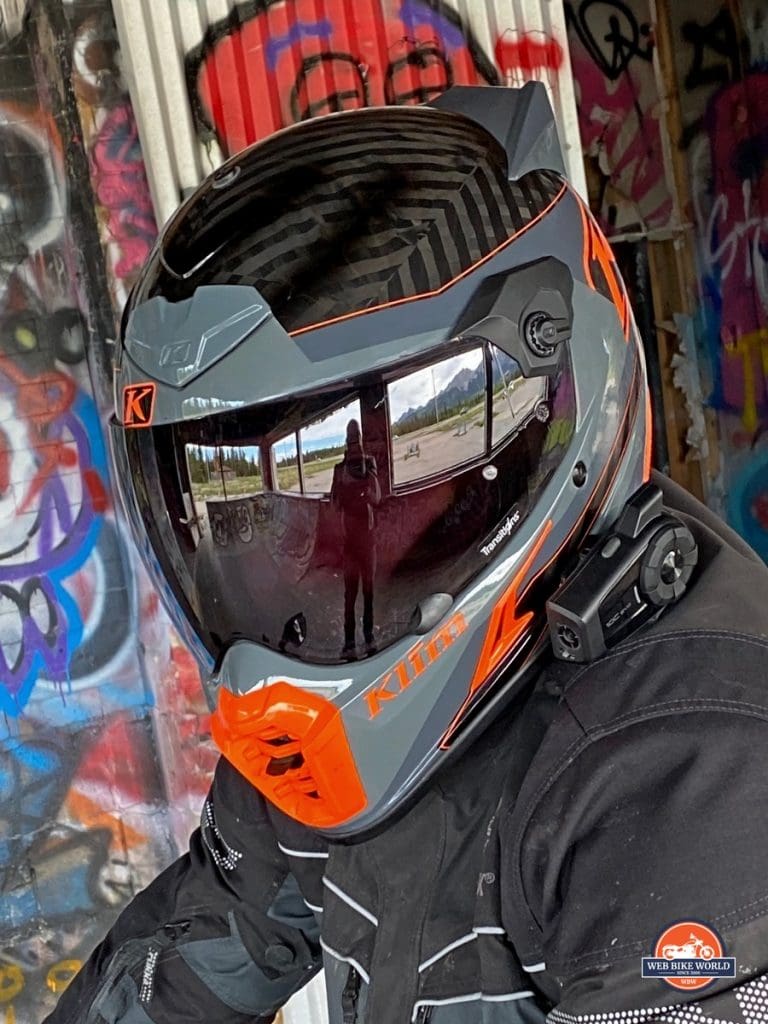


Why did the Klim win?
- The Krios Pro is actually designed to accept the Sena 10U device for full integration inside it, but I don’t have one. Instead, I installed the same Sena 10C EVO in all three helmets for this competition.
- In each helmet, I had to notch out the plastic guide tab on the left side cheek pad in order to run wires from the inside of the helmet to the camera clamped on the outside of the shell. The 10C EVO speakers were installed easily in the Klim and the Arai.
- The Shoei should have been the easiest because it has molded pockets for speakers to sit inside the shell foam, but they’re too small in diameter to house the 45mm speakers that are common in newer devices like the 10C EVO. ***Edit: I’ve been informed that the 45mm speakers from newer Cardo units have a stepped back to them which would fit into the smaller molded pockets in the HornetX2.
- The Klim wins this category because of the overall ease of installation and the perfect location available to mount the microphone right on a point at the top of the inside of the chin bar in front of the wearer’s nose. In that sweet spot, there’s no wind turbulence to be found, so you can transmit clear audio without any wind noise. The Shoei also has this sweet spot to its credit.
- In the Arai, unfortunately, I couldn’t find a calm, wind-free spot to mount either the boom microphone or the remotely wired microphone.
Long Way Up
If –like me– you’re enjoying the Long Way Up adventure ride show on Apple TV you’ll note Ewan and Charley wear Arai XD-4 helmets. You’ll also now likely note the garbled audio recordings from them while out on the road because of the air flow coming in being picked up by the microphones on their Sena 30K devices.
Best Scoring Helmet Overall?
I didn’t keep a running score while writing each section and only at the end did I tally up the total and realize the stunning (to me anyway) result. Ladies and gentlemen, we have a tie between the Shoei and Klim helmets!!!
- Klim Krios Pro: 23 points
- Shoei Hornet X2: 23 points
- Arai XD-4: 20 points
This isn’t at all surprising to me since all three helmets are strong contenders and I’m fanatically critical of any and all shortcomings. I expected a three-way tie before I began the actual testing process based on the reputation of these three competitors.
Conclusion: Read This If Nothing Else
How do we determine a winner overall if there’s an equal number of points scored?
The answer comes down to your individual head shape and riding tendencies in choosing between the Shoei and Klim. As mentioned back in the comfort category if you have a narrow shaped head the easy choice is the Shoei.
It’s even easier to choose the Shoei over the Klim if you have a narrow head AND often ride in very dusty conditions. I think the Shoei is a solid choice for the overall winner regardless of point total.
However…
If you have a round or intermediately narrow-shaped head AND tend to ride in very dusty conditions I would strongly recommend the Arai over the Klim since it won the off road category. But, if you have a round or intermediately narrow head shape and mainly ride on road the Klim is narrowly the better choice.
Frankly, I’m still perplexed how the Klim did better overall than the Arai… and I did the scoring!
Let’s Bring My Personal Bias Into The Equation
As mentioned at the start I approached this comparison trying to decide how to score these helmets with the broadest group of people in mind instead of just my own wants and needs.
What if I was the CEO of Klim, Shoei, and Arai and could make any change I want to the three competitors?
What would I change about the Klim Krios Pro to make it unquestionably the best choice for me, myself?
- Get rid of the Pinlock and install the Arai anti-fog coating on the visor (if possible)
- Change the vents and visor mechanisms to be dustproof like on the Shoei and Arai
- Put the Shoei Hornet X2 sun peak on it
- Give it a higher quality level of workmanship/finish like the hand made Shoei and Arai have instead of the mass produced-factory finish it currently has
- Give it Snell M2020 certification like the Shoei and Arai OR have three independent testing facilities confirm Koroyd is superior to EPS foam
What would I change about the Shoei Hornet X2 to make it better than the other two?
- Make it as light as the Krios Pro is
- Give it airflow equal to the Krios Pro or XD-4
- Include the Transitions visor at no extra charge with the Arai anti-fog coating instead of the Pinlock insert
- Make the helmet less narrow so it fits me like the Arai and Klim do
- Add the Krios Pro’s Fidlock chinstrap or micrometric buckle instead of the D-ring one.
What would I change about the Arai XD-4 to make it better than the other two?
- Make it as light as the Klim Krios Pro is
- Get rid of the sun peak whistling noise
- Make the visor a Transitions auto-tinting one with anti fog coating on it
- Add the Krios Pro’s Fidlock chinstrap or a micrometric buckle instead of the D-ring one
- Make a quiet spot for the microphone to mount on the chinbar or add an integrated microphone somewhere else that isn’t affected by wind noise
For Myself, It’s the Arai or Klim
For me, the helmet I will likely wear the most of the three is the Arai because it’s the most comfortable for my head and just feels “right”. It has that intangible “ahhhhh” factor for me when I put it on that isn’t as strong with the other two.
My very close second choice would be the Klim Krios Pro, especially if I’m filming video footage while out riding and need clear audio on the recording.
The Shoei still just fits a bit too tight and doesn’t cool me as well as the other two helmets do.
I would prefer to have the convenience of a Transitions visor on the Arai XD-4, but since I don’t typically ride at night the tinted visor by itself should be fine 99% of the time for my riding style.
Oops…
I managed to encounter that 1% when the tinted visor was a problem during my testing. I got caught out later than I anticipated one day and ended up having to ride home in the dark. I had left the clear Arai visor at home and only had the tinted visor with me.
Luckily I did have some Klim Viper goggles in my pack and used them to protect my eyes, but it was uncomfortably cold and extra noisy riding at highway speeds wearing only goggles.
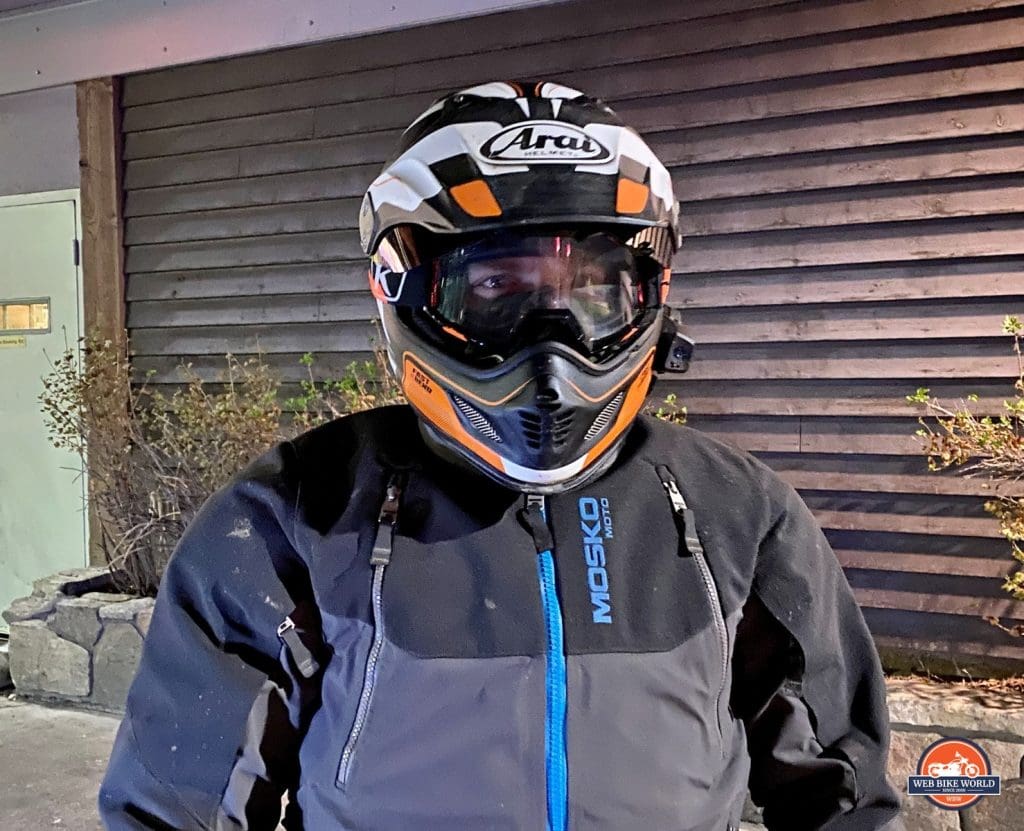


That experience is what ultimately influenced me to score the other two helmets with Transitions visors higher than the Arai non-transitioning visor.
Long Live the Kings: The Klim Krios Pro and Shoei Hornet X2!
Why do I get the feeling I’ve only muddied the waters even more with this comparison? Perhaps I should have added another two helmets to the contest?
– Jim


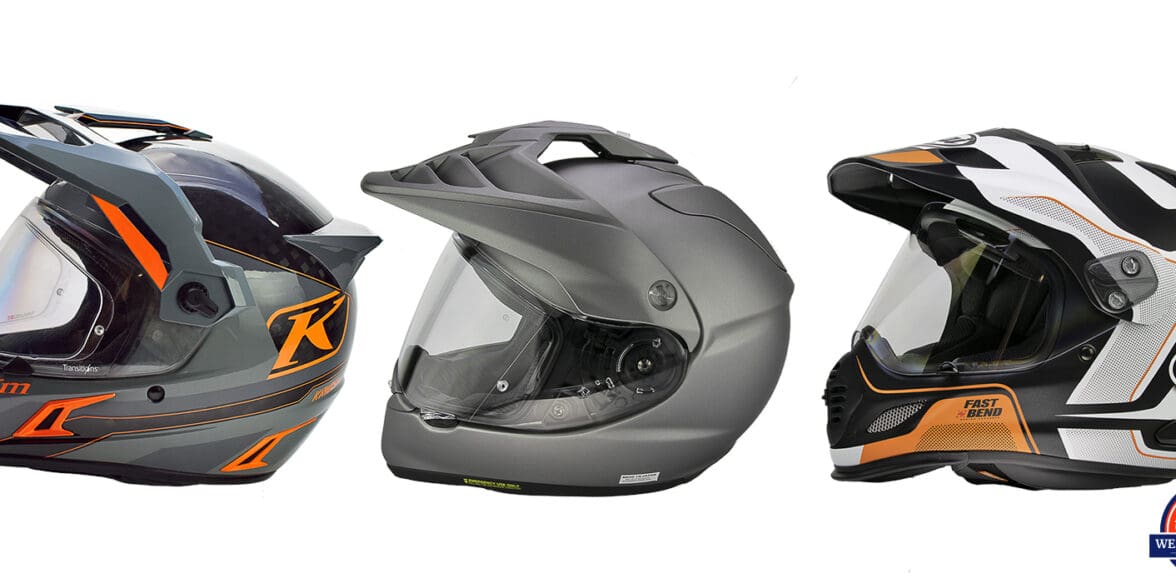
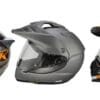
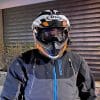
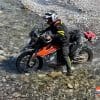



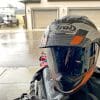
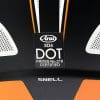
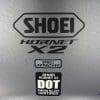




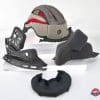
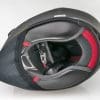
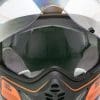
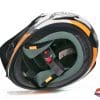
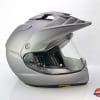

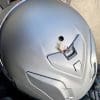

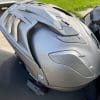

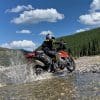



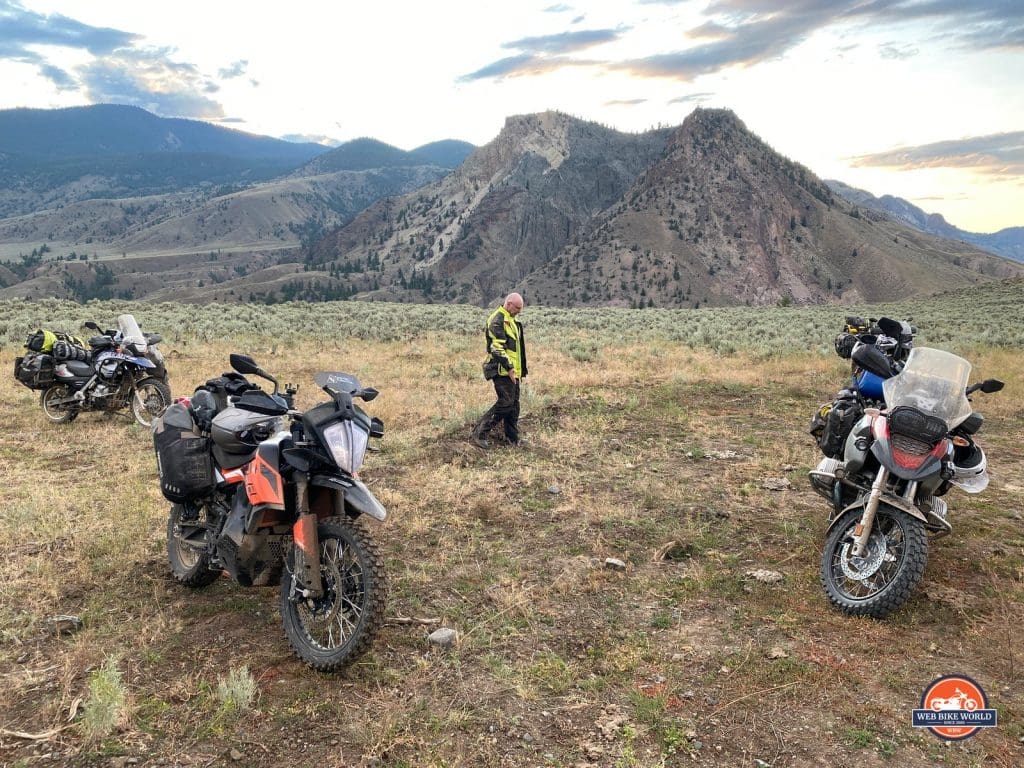
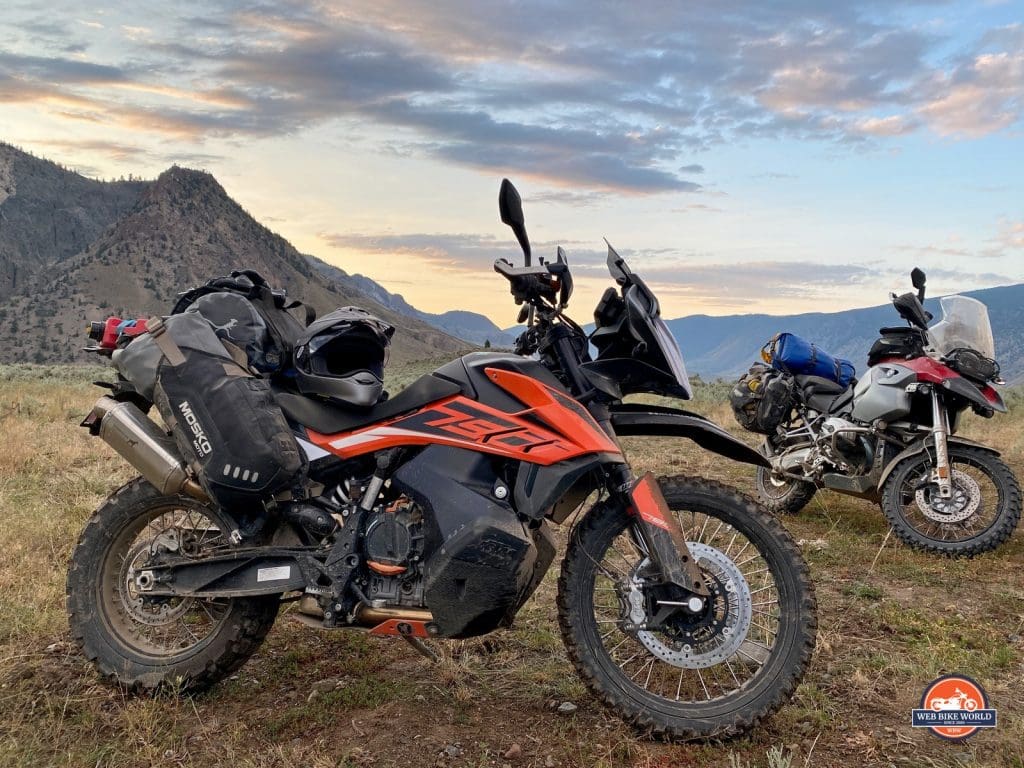
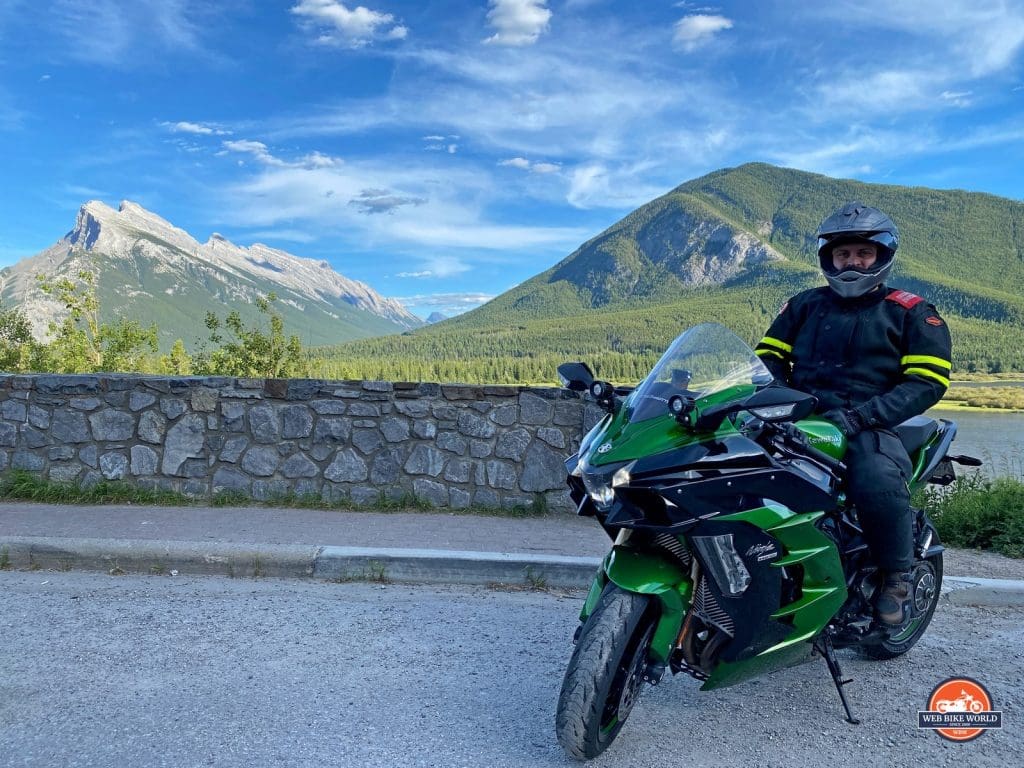 Photo by Chris Felice
Photo by Chris Felice